Notice:
Solar and wind projects are currently not eligible to utilize the Information for Planning and Consultation website (per the July 15, 2025, DOI memo titled, “Departmental Review Procedures for Decisions, Actions, Consultations, and other Undertakings Related to Wind and Solar Energy Facilities” ).
For more information, please reach out to the U.S. Fish and Wildlife Service Field Office nearest to your project/activity.
Explore location
Local offices

|
LocationHarrison County, Mississippi
|

IPaC resource list
This report is an automatically generated list of species and other resources such as critical habitat (collectively referred to as trust resources) under the U.S. Fish and Wildlife Service's (USFWS) jurisdiction that are known or expected to be on or near the project area referenced below. The list may also include trust resources that occur outside of the project area, but that could potentially be directly or indirectly affected by activities in the project area. However, determining the likelihood and extent of effects a project may have on trust resources typically requires gathering additional site-specific (e.g., vegetation/species surveys) and project-specific (e.g., magnitude and timing of proposed activities) information.
Below is a summary of the project information you provided and contact information for the USFWS office(s) with jurisdiction in the defined project area. Please read the introduction to each section that follows (Endangered Species, Migratory Birds, USFWS Facilities, and NWI Wetlands) for additional information applicable to the trust resources addressed in that section.
Location
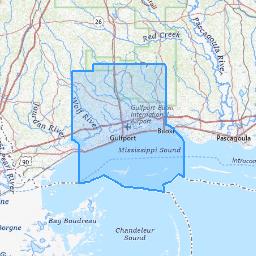
Local offices
Endangered species
This resource list is for informational purposes only and does not constitute an analysis of project level impacts.
The primary information used to generate this list is the known or expected range of each species. Additional areas of influence (AOI) for species are also considered. An AOI includes areas outside of the species range if the species could be indirectly affected by activities in that area (e.g., placing a dam upstream of a fish population even if that fish does not occur at the dam site, may indirectly impact the species by reducing or eliminating water flow downstream). Because species can move, and site conditions can change, the species on this list are not guaranteed to be found on or near the project area. To fully determine any potential effects to species, additional site-specific and project-specific information is often required.
Section 7 of the Endangered Species Act requires Federal agencies to "request of the Secretary information whether any species which is listed or proposed to be listed may be present in the area of such proposed action" for any project that is conducted, permitted, funded, or licensed by any Federal agency. A letter from the local office and a species list which fulfills this requirement can only be obtained by requesting an official species list from either the Regulatory Review section in IPaC (see directions below) or from the local field office directly.
For project evaluations that require USFWS concurrence/review, please return to the IPaC website and request an official species list by doing the following:
- Draw the project location and click CONTINUE.
- Click DEFINE PROJECT.
- Log in (if directed to do so).
- Provide a name and description for your project.
- Click REQUEST SPECIES LIST.
Listed species1 and their critical habitats are managed by the Ecological Services Program of the U.S. Fish and Wildlife Service (USFWS) and the fisheries division of the National Oceanic and Atmospheric Administration (NOAA Fisheries2).
Species and critical habitats under the sole responsibility of NOAA Fisheries are not shown on this list. Please contact NOAA Fisheries for species under their jurisdiction.
Additional information on endangered species data is provided below.
-
Species listed under the Endangered Species Act are threatened or endangered; IPaC also shows species that are candidates, or proposed, for listing. See the listing status page for more information. IPaC only shows species that are regulated by USFWS (see FAQ).
- NOAA Fisheries, also known as the National Marine Fisheries Service (NMFS), is an office of the National Oceanic and Atmospheric Administration within the Department of Commerce.
The following species are potentially affected by activities in this location:
Mammals
-
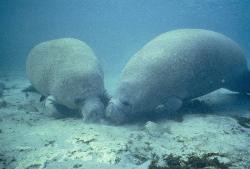 ThreatenedCHWest Indian Manatee Trichechus manatusWherever foundMarine mammal
ThreatenedCHWest Indian Manatee Trichechus manatusWherever foundMarine mammal
Birds
-
 ThreatenedEastern Black Rail Laterallus jamaicensis ssp. jamaicensisWherever found
ThreatenedEastern Black Rail Laterallus jamaicensis ssp. jamaicensisWherever found -
 ThreatenedCHPiping Plover Charadrius melodus
ThreatenedCHPiping Plover Charadrius melodus -
 ThreatenedRed-cockaded Woodpecker Dryobates borealisWherever found
ThreatenedRed-cockaded Woodpecker Dryobates borealisWherever found -
 ThreatenedCHRufa Red Knot Calidris canutus rufaWherever found
ThreatenedCHRufa Red Knot Calidris canutus rufaWherever found -
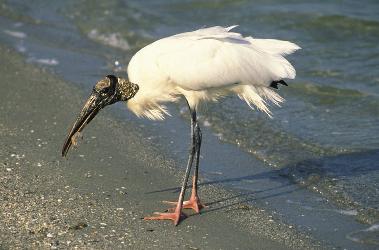 ThreatenedWood Stork Mycteria americana
ThreatenedWood Stork Mycteria americana
Reptiles
-
No photo available
EndangeredAlabama Red-bellied Turtle Pseudemys alabamensisWherever found -
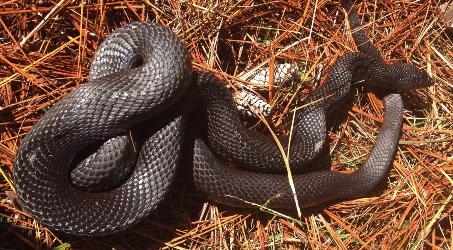 ThreatenedCHBlack Pinesnake Pituophis melanoleucus lodingiWherever found
ThreatenedCHBlack Pinesnake Pituophis melanoleucus lodingiWherever found -
 ThreatenedGopher Tortoise Gopherus polyphemus
ThreatenedGopher Tortoise Gopherus polyphemus -
 EndangeredCHHawksbill Sea Turtle Eretmochelys imbricataWherever found
EndangeredCHHawksbill Sea Turtle Eretmochelys imbricataWherever found -
 EndangeredCHKemp's Ridley Sea Turtle Lepidochelys kempiiWherever found
EndangeredCHKemp's Ridley Sea Turtle Lepidochelys kempiiWherever found -
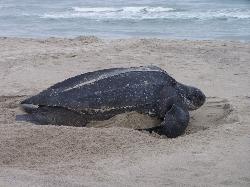 EndangeredCHLeatherback Sea Turtle Dermochelys coriaceaWherever found
EndangeredCHLeatherback Sea Turtle Dermochelys coriaceaWherever found -
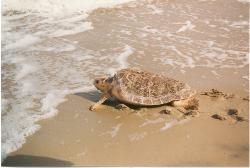 ThreatenedCHLoggerhead Sea Turtle Caretta caretta
ThreatenedCHLoggerhead Sea Turtle Caretta caretta
Amphibians
-
 EndangeredCHDusky Gopher Frog Rana sevosaWherever found
EndangeredCHDusky Gopher Frog Rana sevosaWherever found
Fishes
-
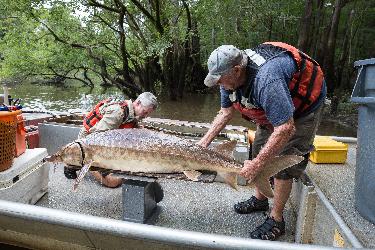 ThreatenedCHGulf Sturgeon Acipenser oxyrinchus (=oxyrhynchus) desotoiWherever found
ThreatenedCHGulf Sturgeon Acipenser oxyrinchus (=oxyrhynchus) desotoiWherever found
Insects
-
 Proposed ThreatenedCHMonarch Butterfly Danaus plexippusWherever found
Proposed ThreatenedCHMonarch Butterfly Danaus plexippusWherever found
Ferns and Allies
-
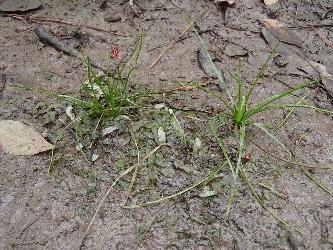 EndangeredLouisiana Quillwort Isoetes louisianensisWherever found
EndangeredLouisiana Quillwort Isoetes louisianensisWherever found
Critical habitats
Potential effects to critical habitat(s) in this location must be analyzed along with the endangered species themselves.
This location overlaps the critical habitat for the following species:
-
FinalBlack Pinesnake Pituophis melanoleucus lodingi
-
FinalDusky Gopher Frog Rana sevosa
-
FinalGulf Sturgeon Acipenser oxyrinchus (=oxyrhynchus) desotoi
-
FinalPiping Plover Charadrius melodus
Mammals
-
Name
Status
-
West Indian Manatee CH Trichechus manatusWherever foundThere is final critical habitat for this species. (published in the Federal Register on September 22, 1977 ). Your location does not overlap the critical habitat.ThreatenedMarine mammal
Birds
-
Name
Status
-
Eastern Black Rail Laterallus jamaicensis ssp. jamaicensisWherever foundNo critical habitat has been designated for this species.Threatened
-
Piping Plover CH Charadrius melodusThere is final critical habitat for this species. (published in the Federal Register on May 19, 2009 ). Your location overlaps the critical habitat.Threatened
-
Red-cockaded Woodpecker Dryobates borealisWherever foundNo critical habitat has been designated for this species.Threatened
-
Rufa Red Knot CH Calidris canutus rufaWherever foundThere is proposed critical habitat for this species. (published in the Federal Register on April 13, 2023 ). Your location does not overlap the critical habitat.Threatened
-
Wood Stork Mycteria americanaNo critical habitat has been designated for this species.Threatened
Reptiles
-
Name
Status
-
Alabama Red-bellied Turtle Pseudemys alabamensisWherever foundNo critical habitat has been designated for this species.Endangered
-
Black Pinesnake CH Pituophis melanoleucus lodingiWherever foundThere is final critical habitat for this species. (published in the Federal Register on February 26, 2020 ). Your location overlaps the critical habitat.Threatened
-
Gopher Tortoise Gopherus polyphemusNo critical habitat has been designated for this species.Threatened
-
Hawksbill Sea Turtle CH Eretmochelys imbricataWherever foundThere is final critical habitat for this species. (published in the Federal Register on September 2, 1998 ). Your location does not overlap the critical habitat.Endangered
-
Kemp's Ridley Sea Turtle CH Lepidochelys kempiiWherever foundThere is proposed critical habitat for this species. (published in the Federal Register on November 29, 1978 ).Endangered
-
Leatherback Sea Turtle CH Dermochelys coriaceaWherever foundThere is final critical habitat for this species. (published in the Federal Register on March 23, 1979 ). Your location does not overlap the critical habitat.Endangered
-
Loggerhead Sea Turtle CH Caretta carettaThere is final critical habitat for this species. (published in the Federal Register on July 10, 2014 ). Your location does not overlap the critical habitat.Threatened
Amphibians
-
Name
Status
-
Dusky Gopher Frog CH Rana sevosaWherever foundThere is final critical habitat for this species. (published in the Federal Register on June 12, 2012 ). Your location overlaps the critical habitat.Endangered
Fishes
-
Name
Status
-
Gulf Sturgeon CH Acipenser oxyrinchus (=oxyrhynchus) desotoiWherever foundThere is final critical habitat for this species. (published in the Federal Register on March 19, 2003 ). Your location overlaps the critical habitat.Threatened
Insects
-
Name
Status
-
Monarch Butterfly CH Danaus plexippusWherever foundThere is proposed critical habitat for this species. (published in the Federal Register on December 12, 2024 ). Your location does not overlap the critical habitat.Proposed Threatened
Ferns and Allies
-
Name
Status
-
Louisiana Quillwort Isoetes louisianensisWherever foundNo critical habitat has been designated for this species.Endangered
-
Critical habitats
Potential effects to critical habitat(s) in this location must be analyzed along with the endangered species themselves.
-
Name
Type
-
Final
-
Final
-
Gulf Sturgeon Acipenser oxyrinchus (=oxyrhynchus) desotoiFinal
-
Final
This location overlaps the critical habitat for the following species:

Status |
Threatened; A species likely to become endangered within the foreseeable future throughout all or a significant portion of its range. This species is also protected by the Marine Mammal Protection Act, and may have additional consultation requirements. |
Description |
Manatees are protected under the Endangered Species Act and the Marine Mammal Protection Act (MMPA). The MMPA generally prohibits the take (i.e., harass, hunt, capture, or kill) of all marine mammals. Manatees are found in marine, estuarine, and freshwater environments. The West Indian manatee, Trichechus manatus, includes two distinct subspecies, the Florida manatee (Trichechus manatus latirostris) and the Antillean manatee (Trichechus manatus manatus). Both subspecies have many common features, though there are some slight morphological differences. Manatees have large, seal-shaped bodies with paired flippers and a round, paddle-shaped tail. They are typically grey in color (color can range from black to light brown) and occasionally spotted with barnacles or colored by patches of algae. The muzzle is heavily whiskered and coarse, single hairs are sparsely distributed throughout the body. Adult manatees, on average, are about nine feet long (3 meters) and weigh about 1,000 pounds (200 kilograms). At birth, calves are between three and four feet long (1 meter) and weigh between 40 and 60 pounds (30 kilograms). |
Critical habitat |
There is final critical habitat for this species.
(published in the Federal Register on
September 22, 1977
).
Your location does not overlap the critical habitat.
|
Species Guidelines |
|
|
For more information, visit the ECOS species profile | |

Status |
Threatened; A species likely to become endangered within the foreseeable future throughout all or a significant portion of its range. |
Description |
No description available |
Critical habitat |
No critical habitat has been designated for this species.
|
Species Guidelines |
|
|
For more information, visit the ECOS species profile | |

Population |
[Atlantic Coast and Northern Great Plains populations] - Wherever found, except those areas where listed as endangered. |
Status |
Threatened; A species likely to become endangered within the foreseeable future throughout all or a significant portion of its range. |
Description |
Size: 18 cm (7.25 in) in length. Color: Breeding season: Pale brown above, lighter below; black band across forehead; bill orange with black tip; legs orange; white rump. Male: Complete or incomplete black band encircles the body at the breast. Female: Paler head band; incomplete breast band. Winter coloration: Bill black; all birds lack breast band and head band. |
Critical habitat |
There is final critical habitat for this species.
(published in the Federal Register on
May 19, 2009
).
Your location overlaps the critical habitat.
|
Species Guidelines |
|
|
For more information, visit the ECOS species profile | |

Status |
Threatened; A species likely to become endangered within the foreseeable future throughout all or a significant portion of its range. |
Description |
22 cm. Rather small black-and-white woodpecker with longish bill. Above black barred white. Below white with black spots on flanks. Black crown, nape and moustachial stripe border white cheeks and side of neck. Male has small red mark on the side of nape. Juvenile browner with variable extent of red on crown. |
Critical habitat |
No critical habitat has been designated for this species.
|
Species Guidelines |
|
|
For more information, visit the ECOS species profile | |

Status |
Threatened; A species likely to become endangered within the foreseeable future throughout all or a significant portion of its range. |
Description |
Length: 25-28 cm. Adults in spring: Above finely mottled with grays, black and light ochre, running into stripes on crown; throat, breast and sides of head cinnamon-brown; dark gray line through eye; abdomen and undertail coverts white; uppertail coverts white, barred with black. Adults in winter: Pale ashy gray above, from crown to rump, with feathers on back narrowly edged with white; underparts white, the breast lightly streaked and speckled, and the flanks narrowly barred with gray. Adults in autumn: Underparts of some individuals show traces of the "red" of spring. |
Critical habitat |
There is proposed critical habitat for this species.
(published in the Federal Register on
April 13, 2023
).
Your location does not overlap the critical habitat.
|
Species Guidelines |
|
|
For more information, visit the ECOS species profile | |

Population |
U.S.A. (AL, FL, GA, MS, NC, SC) |
Status |
Threatened; A species likely to become endangered within the foreseeable future throughout all or a significant portion of its range. |
Description |
Wood storks are large, long-legged wading birds, about 5O inches tall, with a wingspan of 60 to 65 inches. The plumage is white except for black primaries and secondaries and a short black tail. The head and neck are largely unfeathered and dark gray in color. The bill is black, thick at the base, and slightly decurved. Immature birds are dingy gray and have a yellowish bill. |
Critical habitat |
No critical habitat has been designated for this species.
|
|
For more information, visit the ECOS species profile | |
Status |
Endangered; A species in danger of extinction throughout all or a significant portion of its range. |
Description |
This is a large (2O to 25 centimeters or 8 to 1O inches carapace length) freshwater turtle, normally with an orange to reddish plastron and a prominent notch at the tip of the upper jaw, bordered on either side by a toothlike cusp. The elongated carapace is highly arched and elevated along the midline; its highest point is often anterior to the midbody where the carapace is widest. The carapace is brown to olive, with yellow, orange, or reddish streaks and mottling that form distinct, light vertical bars on the pleural scutes. The skin is olive to black with yellow to light orange stripes. The Alabama red-bellied turtle seems to feed almost entirely on aquatic plants (Dobie 1985b). |
Critical habitat |
No critical habitat has been designated for this species.
|
Species Guidelines |
|
|
For more information, visit the ECOS species profile | |

Status |
Threatened; A species likely to become endangered within the foreseeable future throughout all or a significant portion of its range. |
Description |
Adults average from 48-64 inches (122-163 cm). The record is 89 inches (226 cm). A large stocky snake. Back and belly are uniform (or nearly so) black or dark brown. Faint blotches may be seen on the hindbody or tail. In |
Critical habitat |
There is final critical habitat for this species.
(published in the Federal Register on
February 26, 2020
).
Your location overlaps the critical habitat.
|
Species Guidelines |
|
|
For more information, visit the ECOS species profile | |

Population |
Western DPS |
Status |
Threatened; A species likely to become endangered within the foreseeable future throughout all or a significant portion of its range. |
Description |
The gopher tortoise is a large, (shell 15 to 37 centimeters or 5.9 to 14.6 inches long) dark-brown to grayish-black terrestrial turtle with elephantine hind feet, shovel-like forefeet, and a gular projection beneath the head on the yellowish, hingeless plastron or undershell (Ernst and Barbour 1972). The sex of individual turtles can usually be determined by shell dimensions. A male turtle has a greater degree of lower shell concavity, and a longer gular projection. However, the sex of tortoises at maturity size is difficult to determine (U.S. Fish and Wildlife Service 199O). |
Critical habitat |
No critical habitat has been designated for this species.
|
Species Guidelines |
|
|
For more information, visit the ECOS species profile | |

Status |
Endangered; A species in danger of extinction throughout all or a significant portion of its range. |
Description |
The endangered Hawksbill Sea Turtle is one of seven species of sea turtles found throughout the world. One of the smaller sea turtles, it has overlapping scutes (plates) that are thicker than those of other sea turtles. This protects them from being battered against sharp coral and rocks during storm events. Adults range in size from 30 to 36 inches (0.8-1.0 meters) carapace length, and weigh 100 to 200 pounds (45-90 kilograms). Its carapace (upper shell) is an attractive dark brown with faint yellow streaks and blotches and a yellow plastron (under shell). The name "hawksbill" refers to the turtle's prominent hooked beak. |
Critical habitat |
There is final critical habitat for this species.
(published in the Federal Register on
September 2, 1998
).
Your location does not overlap the critical habitat.
|
Species Guidelines |
|
|
For more information, visit the ECOS species profile | |

Status |
Endangered; A species in danger of extinction throughout all or a significant portion of its range. |
Description |
The Kemp's ridley turtle is the smallest of the sea turtles, with adults reaching about 2 feet in length and weighing up to 100 pounds. The adult Kemp's ridley has an oval carapace that is almost as wide as it is long and is usually olive-gray in color. The carapace has five pairs of costal scutes. In each bridge adjoining the plastron to the carapace, there are four inframarginal scutes, each of which is perforated by a pore. The head has two pairs of prefrontal scales. Hatchlings are black on both sides. The Kemp's ridley has a triangular-shaped head with a somewhat hooked beak with large crushing surfaces. This turtle is a shallow water benthic feeder with a diet consisting primarily of crabs. |
Critical habitat |
There is proposed critical habitat for this species.
(published in the Federal Register on
November 29, 1978
).
|
Species Guidelines |
|
|
For more information, visit the ECOS species profile | |

Status |
Endangered; A species in danger of extinction throughout all or a significant portion of its range. |
Description |
The leatherback is the largest, deepest diving, and most migratory and wide ranging of all sea turtles. The adult leatherback can reach 4 to 8 feet in length and 500 to 2000 pounds in weight. Its shell is composed of a mosaic of small bones covered by firm, rubbery skin with seven longitudinal ridges or keels. The skin is predominantly black with varying degrees of pale spotting; including a notable pink spot on the dorsal surface of the head in adults. A toothlike cusp is located on each side of the gray upper jaw; the lower jaw is hooked anteriorly. The paddle-like clawless limbs are black with white margins and pale spotting. |
Critical habitat |
There is final critical habitat for this species.
(published in the Federal Register on
March 23, 1979
).
Your location does not overlap the critical habitat.
|
Species Guidelines |
|
|
For more information, visit the ECOS species profile | |

Population |
Northwest Atlantic Ocean DPS - Loggerhead sea turtles originating from the Northwest Atlantic Ocean west of 40 degrees W. Long |
Status |
Threatened; A species likely to become endangered within the foreseeable future throughout all or a significant portion of its range. |
Description |
Loggerheads were named for their relatively large heads, which support powerful jaws and enable them to feed on hard-shelled prey, such as whelks and conch. The carapace (top shell) is slightly heart-shaped and reddish-brown in adults and sub-adults, while the plastron (bottom shell) is generally a pale yellowish color. The neck and flippers are usually dull brown to reddish brown on top and medium to pale yellow on the sides and bottom. Mean straight carapace length of adults in the southeastern U.S. is approximately 36 in (92 cm); corresponding weight is about 250 lbs (113 kg). On July 28, 1978, the Fish and Wildlife Service and National Marine Fisheries Service (Services) issued a final rule listing the loggerhead sea turtle as threatened throughout its worldwide range. On September 22, 2011, the Services determined that the loggerhead sea turtle is composed of 9 distinct population segments and listed four DPSs as threatened and five DPSs as endangered under the ESA. All but two of these DPSs are wholly foreign species. |
Critical habitat |
There is final critical habitat for this species.
(published in the Federal Register on
July 10, 2014
).
Your location does not overlap the critical habitat.
|
|
For more information, visit the ECOS species profile | |

Status |
Endangered; A species in danger of extinction throughout all or a significant portion of its range. |
Description |
No description available |
Critical habitat |
There is final critical habitat for this species.
(published in the Federal Register on
June 12, 2012
).
Your location overlaps the critical habitat.
|
Species Guidelines |
|
|
For more information, visit the ECOS species profile | |

Status |
Threatened; A species likely to become endangered within the foreseeable future throughout all or a significant portion of its range. |
Description |
No description available |
Critical habitat |
There is final critical habitat for this species.
(published in the Federal Register on
March 19, 2003
).
Your location overlaps the critical habitat.
|
Species Guidelines |
|
|
For more information, visit the ECOS species profile | |

Status |
Proposed Threatened; Species proposed for official listing as threatened. |
Description |
For information on monarch conservation, visit https://www.fws.gov/initiative/pollinators/monarchs, http://www.mafwa.org/?page_id=2347, and, for the West, https://wafwa.org/committees-working-groups/monarch-working-group/. Adult monarch butterflies are large and conspicuous, with bright orange wings surrounded by a black border and covered with black veins. The black border has a double row of white spots, present on the upper side of the wings. Adult monarchs are sexually dimorphic, with males having narrower wing venation and scent patches. The bright coloring of a monarch serves as a warning to predators that eating them can be toxic. During the breeding season, monarchs lay their eggs on their obligate milkweed host plant (primarily Asclepias spp.), and larvae emerge after two to five days. Larvae develop through five larval instars (intervals between molts) over a period of 9 to 18 days, feeding on milkweed and sequestering toxic chemicals (cardenolides) as a defense against predators. The larva then pupates into a chrysalis before emerging 6 to 14 days later as an adult butterfly. There are multiple generations of monarchs produced during the breeding season, with most adult butterflies living approximately two to five weeks; overwintering adults enter into reproductive diapause (suspended reproduction) and live six to nine months. In many regions where monarchs are present, monarchs breed year-round. Individual monarchs in temperate climates, such as eastern and western North America, undergo long-distance migration, and live for an extended period of time. In the fall, in both eastern and western North America, monarchs begin migrating to their respective overwintering sites. This migration can take monarchs distances of over 3,000 km and last for over two months. In early spring (February-March), surviving monarchs break diapause and mate at the overwintering sites before dispersing. The same individuals that undertook the initial southward migration begin flying back through the breeding grounds and their offspring start the cycle of generational migration over again. |
Critical habitat |
There is proposed critical habitat for this species.
(published in the Federal Register on
December 12, 2024
).
Your location does not overlap the critical habitat.
|
Species Guidelines |
|
|
For more information, visit the ECOS species profile | |

Status |
Endangered; A species in danger of extinction throughout all or a significant portion of its range. |
Description |
Louisiana quillwort is a small, semi-aquatic, facultative evergreen plant with spirally-arranged leaves (sporophylls) arising from a globose, two-lobed corm. The pliant, hollow leaves are transversely septate and measure 2-3 mm (0.12 in.) wide and up to 40 cm (16.0 in.) long. Spore-containing structures (sporangia) are embedded in the pale, broadened bases of the leaves. Kral (1983) suggested that aquatic quillwort leaves may vary in length depending on water depth. |
Critical habitat |
No critical habitat has been designated for this species.
|
Species Guidelines |
|
|
For more information, visit the ECOS species profile | |
The primary information used to generate this list is the known or expected range of each species. Additional areas of influence (AOI) for species are also considered. An AOI includes areas outside of the species range if the species could be indirectly affected by activities in that area (e.g., placing a dam upstream of a fish population even if that fish does not occur at the dam site, may indirectly impact the species by reducing or eliminating water flow downstream). Because species can move, and site conditions can change, the species on this list are not guaranteed to be found on or near the project area. To fully determine any potential effects to species, additional site-specific and project-specific information is often required.
IPaC resource lists only include listed species1 and critical habitats that are solely or jointly managed by the U.S. Fish and Wildlife Service's Ecological Services Program.
Evaluating potential impacts to other Federal, state, and local resources may require coordination with non-USFWS entities.
IPaC does not display listed species or critical habitats under the sole jurisdiction of NOAA Fisheries2, as USFWS does not have the authority to speak on behalf of NOAA and the Department of Commerce.
Generally, NOAA Fisheries is the lead agency for listed marine species (i.e., marine mammals, sea turtles, marine and anadromous fish, and marine invertebrates and plants), while USFWS manages land and freshwater species, along with manatees, sea otters, and sea turtles when they are on land. IPaC includes only those species for which USFWS is the sole lead agency or for which USFWS and NOAA Fisheries share the lead responsibilities. To obtain a list of species in your project area for which NOAA Fisheries is the sole lead agency, you will need to contact NOAA Fisheries.
As a general rule, if in doubt, use the information you receive from IPaC for planning purposes and contact the appropriate local office(s) to ensure that you have a complete understanding of the information you receive. The IPaC system will provide you with the appropriate USFWS contacts.
In most cases, if IPaC provides a report with no listed species1 or designated critical habitat found in the proposed project planning area, it is not necessary to contact the local USFWS office regarding listed species issues unless specified otherwise.
However, there are exceptions:
- If you are aware of unusual circumstances that you believe may change the type or extent of potential effects, you should contact your local USFWS office
- There may still be the need to contact the local USFWS office to fulfill the requirements of the Fish and Wildlife Coordination Act.
Section 7 of the Endangered Species Act requires Federal agencies to "request of the Secretary information whether any species which is listed or proposed to be listed may be present in the area of such proposed action" for any project that is conducted, permitted, funded, or licensed by any Federal agency. A letter from the local office and a species list which fulfills this requirement can only be obtained by requesting an official species list from either the Regulatory Review section in IPaC (see directions below) or from the local field office directly.
For project evaluations that require USFWS concurrence/review, please request an official species list by doing the following:
- Click DEFINE PROJECT.
- Log in (if directed to do so).
- Provide a name and description for your project.
- Click REQUEST SPECIES LIST.
Bald & Golden Eagles
Bald and Golden Eagles are protected under the Bald and Golden Eagle Protection Act 2 and the Migratory Bird Treaty Act (MBTA) 1. Any person or organization who plans or conducts activities that may result in impacts to Bald or Golden Eagles, or their habitats, should follow appropriate regulations and consider implementing appropriate avoidance and minimization measures, as described in the various links on this page.
Additional information can be found using the following links:
- Eagle Management https://www.fws.gov/program/eagle-management
- Measures for avoiding and minimizing impacts to birds https://www.fws.gov/library/collections/avoiding-and-minimizing-incidental-take-migratory-birds
- Nationwide avoidance and minimization measures for birds https://www.fws.gov/sites/default/files/documents/nationwide-standard-conservation-measures.pdf
- Supplemental Information for Migratory Birds and Eagles in IPaC https://www.fws.gov/media/supplemental-information-migratory-birds-and-bald-and-golden-eagles-may-occur-project-action
There are Bald Eagles and/or Golden Eagles in your project area.
Measures for Proactively Minimizing Eagle ImpactsFor information on how to best avoid and minimize disturbance to nesting bald eagles, please review the National Bald Eagle Management Guidelines. You may employ the timing and activity-specific distance recommendations in this document when designing your project/activity to avoid and minimize eagle impacts. For bald eagle information specific to Alaska, please refer to Bald Eagle Nesting and Sensitivity to Human Activity.
The FWS does not currently have guidelines for avoiding and minimizing disturbance to nesting Golden Eagles. For site-specific recommendations regarding nesting Golden Eagles, please consult with the appropriate Regional Migratory Bird Office or Ecological Services Field Office.
If disturbance or take of eagles cannot be avoided, an incidental take permit may be available to authorize any take that results from, but is not the purpose of, an otherwise lawful activity. For assistance making this determination for Bald Eagles, visit the Do I Need A Permit Tool. For assistance making this determination for golden eagles, please consult with the appropriate Regional Migratory Bird Office or Ecological Services Field Office.
Ensure Your Eagle List is Accurate and CompleteIf your project area is in a poorly surveyed area in IPaC, your list may not be complete and you may need to rely on other resources to determine what species may be present (e.g. your local FWS field office, state surveys, your own surveys). Please review the Supplemental Information on Migratory Birds and Eagles, to help you properly interpret the report for your specified location, including determining if there is sufficient data to ensure your list is accurate.
For guidance on when to schedule activities or implement avoidance and minimization measures to reduce impacts to bald or golden eagles on your list, see the "Probability of Presence Summary" below to see when these bald or golden eagles are most likely to be present and breeding in your project area.
Review the FAQsThe FAQs below provide important additional information and resources.
-
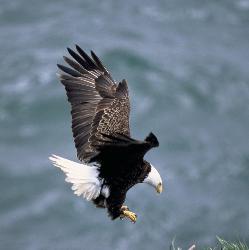 Non-BCC VulnerableBald Eagle Haliaeetus leucocephalus
Non-BCC VulnerableBald Eagle Haliaeetus leucocephalus
-
Name / Level of Concern
Breeding Season
Breeding Season
-
Bald Eagle Haliaeetus leucocephalusNon-BCC VulnerableThis is not a Bird of Conservation Concern (BCC) in this area, but warrants attention because of the Eagle Act or for potential susceptibilities in offshore areas from certain types of development or activities.https://ecos.fws.gov/ecp/species/1626
Breeds Sep 1 to Jul 31

Level of Concern |
This is not a Bird of Conservation Concern (BCC) in this area, but warrants attention because of the Eagle Act or for potential susceptibilities in offshore areas from certain types of development or activities. |
||||||||||||||||||||||||
Presence |
|
||||||||||||||||||||||||
Description |
A large raptor, the bald eagle has a wingspread of about 7 feet. Adults have a dark brown body and wings, white head and tail, and a yellow beak. Juveniles are mostly brown with white mottling on the body, tail, and undersides of wings. Adult plumage usually is obtained by the 6th year. In flight, the Bald Eagle often soars or glides with the wings held at a right angle to the body. As in most other raptors, females are larger than males; sexes otherwise similar in appearance. References for Species Profile
|
||||||||||||||||||||||||
|
For more information, visit the ECOS species profile | |||||||||||||||||||||||||
Eagles Probability of Presence for this Project
Tell me about these graphs.| Species | Jan | Feb | Mar | Apr | May | Jun | Jul | Aug | Sep | Oct | Nov | Dec |
|---|---|---|---|---|---|---|---|---|---|---|---|---|
|
Bald Eagle
Non-BCC Vulnerable
Non-BCC Vulnerable
|
|
|
|
|
|
|
|
|
|
|
|
|
Probability of Presence Summary
The graphs below provide our best understanding of when birds of concern are most likely to be present in your project area. This information can be used to tailor and schedule your project activities to avoid or minimize impacts to birds. Please make sure you read "Supplemental Information on Migratory Birds and Eagles", specifically the FAQ section titled "Proper Interpretation and Use of Your Migratory Bird Report" before using or attempting to interpret this report.
Probability of Presence (
Each green bar represents the bird's relative probability of presence in the 10km grid cell(s) your project overlaps during a particular week of the year. (A year is represented as 12 4-week months.) A taller bar indicates a higher probability of species presence. The survey effort (see below) can be used to establish a level of confidence in the presence score. One can have higher confidence in the presence score if the corresponding survey effort is also high.
How is the probability of presence score calculated? The calculation is done in three steps:
- The probability of presence for each week is calculated as the number of survey events in the week where the species was detected divided by the total number of survey events for that week. For example, if in week 12 there were 20 survey events and the Spotted Towhee was found in 5 of them, the probability of presence of the Spotted Towhee in week 12 is 0.25.
- To properly present the pattern of presence across the year, the relative probability of presence is calculated. This is the probability of presence divided by the maximum probability of presence across all weeks. For example, imagine the probability of presence in week 20 for the Spotted Towhee is 0.05, and that the probability of presence at week 12 (0.25) is the maximum of any week of the year. The relative probability of presence on week 12 is 0.25/0.25 = 1; at week 20 it is 0.05/0.25 = 0.2.
- The relative probability of presence calculated in the previous step undergoes a statistical conversion so that all possible values fall between 0 and 10, inclusive. This is the probability of presence score.
To see a bar's probability of presence score, simply hover your mouse cursor over the bar.
Breeding Season (Yellow bars denote a very liberal estimate of the time-frame inside which the bird breeds across its entire range. If there are no yellow bars shown for a bird, it does not breed in your project area.
Survey Effort (Vertical black lines superimposed on probability of presence bars indicate the number of surveys performed for that species in the 10km grid cell(s) your project area overlaps. The number of surveys is expressed as a range, for example, 33 to 64 surveys.
To see a bar's survey effort range, simply hover your mouse cursor over the bar.
No Data (A week is marked as having no data if there were no survey events for that week.
Survey TimeframeSurveys from only the last 10 years are used in order to ensure delivery of currently relevant information. The exception to this is areas off the Atlantic coast, where bird returns are based on all years of available data, since data in these areas is currently much more sparse.
| Species | Jan | Feb | Mar | Apr | May | Jun | Jul | Aug | Sep | Oct | Nov | Dec |
|---|---|---|---|---|---|---|---|---|---|---|---|---|
|
Bald Eagle
Non-BCC Vulnerable
Non-BCC Vulnerable
|
|
|
|
|
|
|
|
|
|
|
|
|
Bald & Golden Eagles FAQs
The potential for eagle presence is derived from data provided by the Avian Knowledge Network (AKN). The AKN data is based on a growing collection of survey, banding, and citizen science datasets and is queried and filtered to return a list of those birds reported as occurring in the 10km grid cell(s) which your project intersects, and that have been identified as warranting special attention because they are an eagle (Bald and Golden Eagle Protection Act requirements may apply).
Proper interpretation and use of your eagle reportOn the graphs provided, please look carefully at the survey effort (indicated by the black vertical line) and for the existence of the "no data" indicator (a red horizontal line). A high survey effort is the key component. If the survey effort is high, then the probability of presence score can be viewed as more dependable. In contrast, a low survey effort line or no data line (red horizontal) means a lack of data and, therefore, a lack of certainty about presence of the species. This list is not perfect; it is simply a starting point for identifying what birds have the potential to be in your project area, when they might be there, and if they might be breeding (which means nests might be present). The list and associated information help you know what to look for to confirm presence and helps guide you in knowing when to implement avoidance and minimization measures to eliminate or reduce potential impacts from your project activities or get the appropriate permits should presence be confirmed.
To see what part of a particular bird's range your project area falls within (i.e. breeding, wintering, migrating, or resident), you may query your location using the RAIL Tool and view the range maps provided for birds in your area at the bottom of the profiles provided for each bird in your results. If an eagle on your IPaC migratory bird species list has a breeding season associated with it (indicated by yellow vertical bars on the phenology graph in your “IPaC PROBABILITY OF PRESENCE SUMMARY” at the top of your results list), there may be nests present at some point within the timeframe specified. If "Breeds elsewhere" is indicated, then the bird likely does not breed in your project area.
Interpreting the Probability of Presence Graphs
Each green bar represents the bird's relative probability of presence in the 10km grid cell(s) your project overlaps during a particular week of the year. A taller bar indicates a higher probability of species presence. The survey effort can be used to establish a level of confidence in the presence score.
How is the probability of presence score calculated? The calculation is done in three steps:The probability of presence for each week is calculated as the number of survey events in the week where the species was detected divided by the total number of survey events for that week. For example, if in week 12 there were 20 survey events and the Spotted Towhee was found in 5 of them, the probability of presence of the Spotted Towhee in week 12 is 0.25.
To properly present the pattern of presence across the year, the relative probability of presence is calculated. This is the probability of presence divided by the maximum probability of presence across all weeks. For example, imagine the probability of presence in week 20 for the Spotted Towhee is 0.05, and that the probability of presence at week 12 (0.25) is the maximum of any week of the year. The relative probability of presence on week 12 is 0.25/0.25 = 1; at week 20 it is 0.05/0.25 = 0.2.
The relative probability of presence calculated in the previous step undergoes a statistical conversion so that all possible values fall between 0 and 10, inclusive. This is the probability of presence score.
Breeding Season ()Yellow bars denote a very liberal estimate of the time-frame inside which the bird breeds across its entire range. If there are no yellow bars shown for a bird, it does not breed in your project area.
Survey Effort ()Vertical black lines superimposed on probability of presence bars indicate the number of surveys performed for that species in the 10km grid cell(s) your project area overlaps.
No Data ()A week is marked as having no data if there were no survey events for that week.
Survey TimeframeSurveys from only the last 10 years are used in order to ensure delivery of currently relevant information. The exception to this is areas off the Atlantic coast, where bird returns are based on all years of available data, since data in these areas is currently much more sparse.
Migratory birds
The Migratory Bird Treaty Act (MBTA) 1 prohibits the take (including killing, capturing, selling, trading, and transport) of protected migratory bird species without prior authorization by the Department of Interior U.S. Fish and Wildlife Service (Service).
-
The Migratory Birds Treaty Act of 1918.
-
The Bald and Golden Eagle Protection Act of 1940.
Additional information can be found using the following links:
- Eagle Management https://www.fws.gov/program/eagle-management
- Measures for avoiding and minimizing impacts to birds https://www.fws.gov/library/collections/avoiding-and-minimizing-incidental-take-migratory-birds
- Nationwide avoidance and minimization measures for birds
- Supplemental Information for Migratory Birds and Eagles in IPaC https://www.fws.gov/media/supplemental-information-migratory-birds-and-bald-and-golden-eagles-may-occur-project-action
Measures for Proactively Minimizing Migratory Bird Impacts
Your IPaC Migratory Bird list showcases birds of concern, including Birds of Conservation Concern (BCC), in your project location. This is not a comprehensive list of all birds found in your project area. However, you can help proactively minimize significant impacts to all birds at your project location by implementing the measures in the Nationwide avoidance and minimization measures for birds document, and any other project-specific avoidance and minimization measures suggested at the link Measures for avoiding and minimizing impacts to birds for the birds of concern on your list below.
Ensure Your Migratory Bird List is Accurate and Complete
If your project area is in a poorly surveyed area, your list may not be complete and you may need to rely on other resources to determine what species may be present (e.g. your local FWS field office, state surveys, your own surveys). Please review the Supplemental Information on Migratory Birds and Eagles document, to help you properly interpret the report for your specified location, including determining if there is sufficient data to ensure your list is accurate.
For guidance on when to schedule activities or implement avoidance and minimization measures to reduce impacts to migratory birds on your list, see the "Probability of Presence Summary" below to see when these birds are most likely to be present and breeding in your project area.
Review the FAQsThe FAQs below provide important additional information and resources.
-
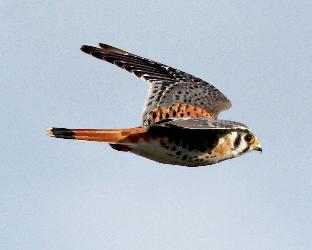 BCC - BCRAmerican Kestrel Falco sparverius paulus
BCC - BCRAmerican Kestrel Falco sparverius paulus -
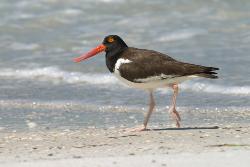 BCC Rangewide (CON)American Oystercatcher Haematopus palliatus
BCC Rangewide (CON)American Oystercatcher Haematopus palliatus -
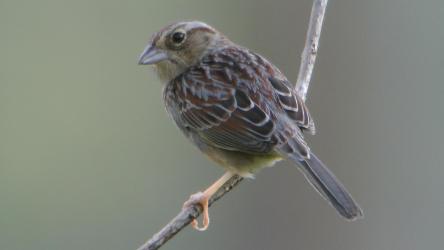 BCC Rangewide (CON)Bachman's Sparrow Peucaea aestivalis
BCC Rangewide (CON)Bachman's Sparrow Peucaea aestivalis -
 Non-BCC VulnerableBald Eagle Haliaeetus leucocephalus
Non-BCC VulnerableBald Eagle Haliaeetus leucocephalus -
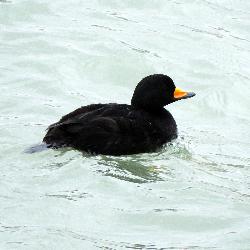 Non-BCC VulnerableBlack Scoter Melanitta nigra
Non-BCC VulnerableBlack Scoter Melanitta nigra -
 BCC Rangewide (CON)Black Skimmer Rynchops niger
BCC Rangewide (CON)Black Skimmer Rynchops niger -
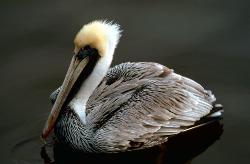 Non-BCC VulnerableBrown Pelican Pelecanus occidentalis
Non-BCC VulnerableBrown Pelican Pelecanus occidentalis -
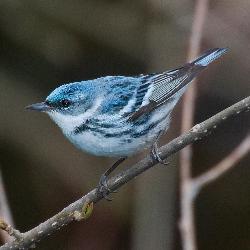 BCC Rangewide (CON)Cerulean Warbler Setophaga cerulea
BCC Rangewide (CON)Cerulean Warbler Setophaga cerulea -
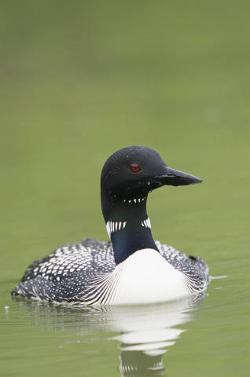 Non-BCC VulnerableCommon Loon gavia immer
Non-BCC VulnerableCommon Loon gavia immer -
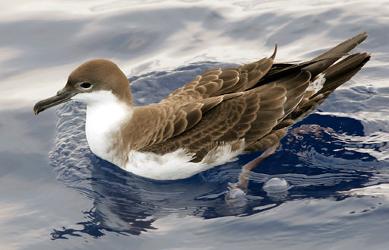 Non-BCC VulnerableGreat Shearwater Puffinus gravis
Non-BCC VulnerableGreat Shearwater Puffinus gravis -
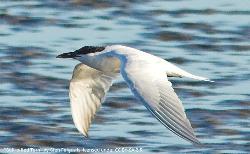 BCC Rangewide (CON)Gull-billed Tern Gelochelidon nilotica
BCC Rangewide (CON)Gull-billed Tern Gelochelidon nilotica -
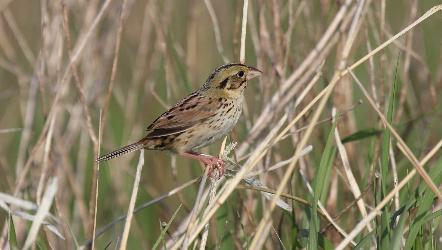 BCC Rangewide (CON)Henslow's Sparrow Centronyx henslowii
BCC Rangewide (CON)Henslow's Sparrow Centronyx henslowii -
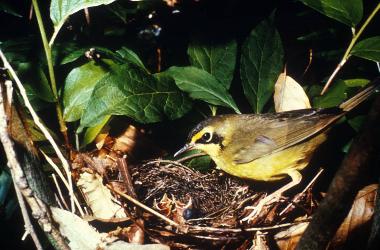 BCC Rangewide (CON)Kentucky Warbler Geothlypis formosa
BCC Rangewide (CON)Kentucky Warbler Geothlypis formosa -
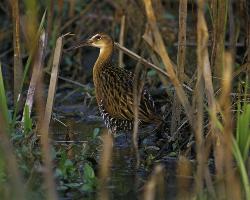 BCC Rangewide (CON)King Rail Rallus elegans
BCC Rangewide (CON)King Rail Rallus elegans -
 BCC Rangewide (CON)Lesser Yellowlegs Tringa flavipes
BCC Rangewide (CON)Lesser Yellowlegs Tringa flavipes -
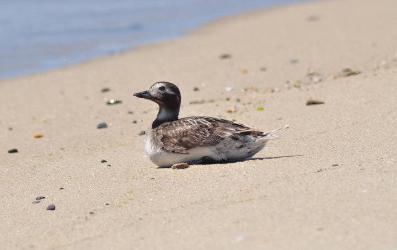 Non-BCC VulnerableLong-tailed Duck Clangula hyemalis
Non-BCC VulnerableLong-tailed Duck Clangula hyemalis -
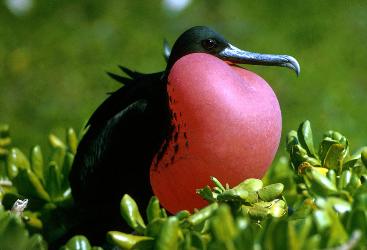 BCC - BCRMagnificent Frigatebird Fregata magnificens
BCC - BCRMagnificent Frigatebird Fregata magnificens -
 BCC Rangewide (CON)Marbled Godwit Limosa fedoa
BCC Rangewide (CON)Marbled Godwit Limosa fedoa -
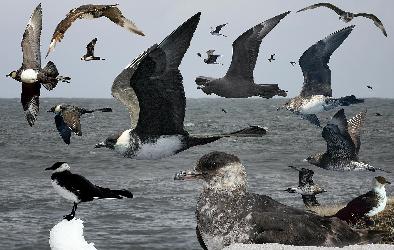 Non-BCC VulnerablePomarine Jaeger Stercorarius pomarinus
Non-BCC VulnerablePomarine Jaeger Stercorarius pomarinus -
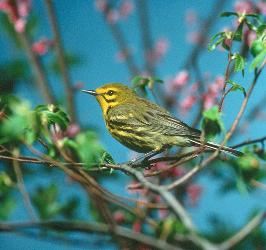 BCC Rangewide (CON)Prairie Warbler Setophaga discolor
BCC Rangewide (CON)Prairie Warbler Setophaga discolor -
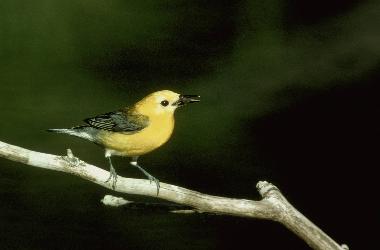 BCC Rangewide (CON)Prothonotary Warbler Protonotaria citrea
BCC Rangewide (CON)Prothonotary Warbler Protonotaria citrea -
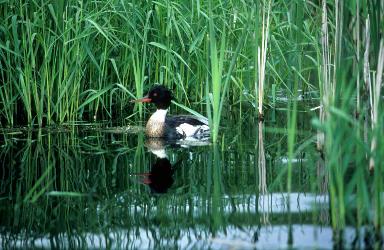 Non-BCC VulnerableRed-breasted Merganser Mergus serrator
Non-BCC VulnerableRed-breasted Merganser Mergus serrator -
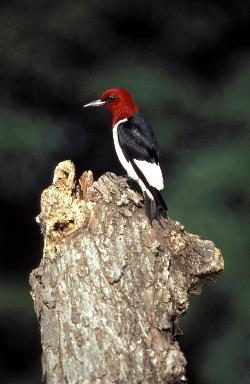 BCC Rangewide (CON)Red-headed Woodpecker Melanerpes erythrocephalus
BCC Rangewide (CON)Red-headed Woodpecker Melanerpes erythrocephalus -
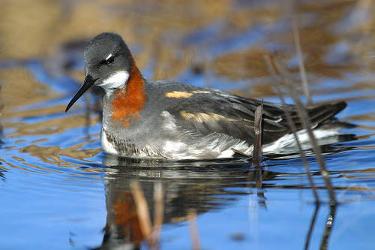 Non-BCC VulnerableRed-necked Phalarope Phalaropus lobatus
Non-BCC VulnerableRed-necked Phalarope Phalaropus lobatus -
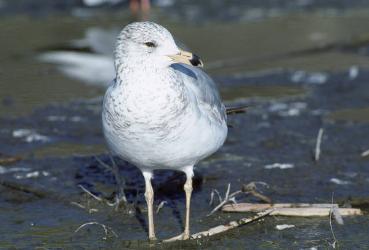 Non-BCC VulnerableRing-billed Gull Larus delawarensis
Non-BCC VulnerableRing-billed Gull Larus delawarensis -
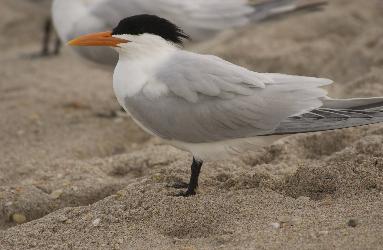 Non-BCC VulnerableRoyal Tern Thalasseus maximus
Non-BCC VulnerableRoyal Tern Thalasseus maximus -
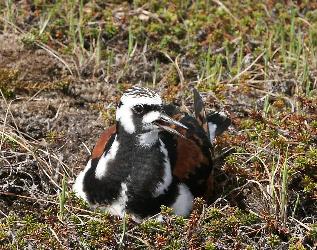 BCC - BCRRuddy Turnstone Arenaria interpres morinella
BCC - BCRRuddy Turnstone Arenaria interpres morinella -
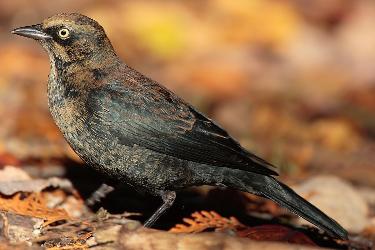 BCC - BCRRusty Blackbird Euphagus carolinus
BCC - BCRRusty Blackbird Euphagus carolinus -
 BCC Rangewide (CON)Short-billed Dowitcher Limnodromus griseus
BCC Rangewide (CON)Short-billed Dowitcher Limnodromus griseus -
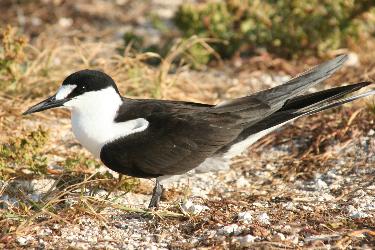 Non-BCC VulnerableSooty Tern Onychoprion fuscatus
Non-BCC VulnerableSooty Tern Onychoprion fuscatus -
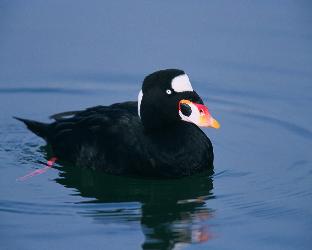 Non-BCC VulnerableSurf Scoter Melanitta perspicillata
Non-BCC VulnerableSurf Scoter Melanitta perspicillata -
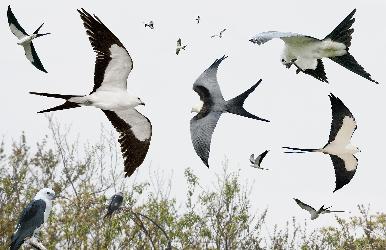 BCC Rangewide (CON)Swallow-tailed Kite Elanoides forficatus
BCC Rangewide (CON)Swallow-tailed Kite Elanoides forficatus -
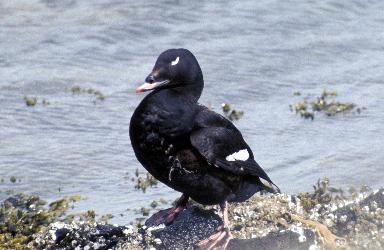 Non-BCC VulnerableWhite-winged Scoter Melanitta fusca
Non-BCC VulnerableWhite-winged Scoter Melanitta fusca -
 BCC Rangewide (CON)Willet Tringa semipalmata
BCC Rangewide (CON)Willet Tringa semipalmata -
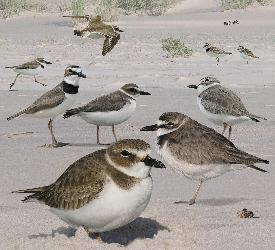 BCC Rangewide (CON)Wilson's Plover Charadrius wilsonia
BCC Rangewide (CON)Wilson's Plover Charadrius wilsonia -
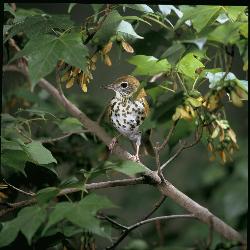 BCC Rangewide (CON)Wood Thrush Hylocichla mustelina
BCC Rangewide (CON)Wood Thrush Hylocichla mustelina -
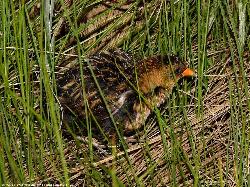 BCC Rangewide (CON)Yellow Rail Coturnicops noveboracensis
BCC Rangewide (CON)Yellow Rail Coturnicops noveboracensis
-
Name / Level of Concern
Breeding Season
Breeding Season
-
American Kestrel Falco sparverius paulusBCC - BCRThis is a Bird of Conservation Concern (BCC) only in particular Bird Conservation Regions (BCRs) in the continental USAhttps://ecos.fws.gov/ecp/species/9587
Breeds Apr 1 to Aug 31
-
American Oystercatcher Haematopus palliatusBCC Rangewide (CON)This is a Bird of Conservation Concern (BCC) throughout its range in the continental USA and Alaska.https://ecos.fws.gov/ecp/species/8935
Breeds Apr 15 to Aug 31
-
Bachman's Sparrow Peucaea aestivalisBCC Rangewide (CON)This is a Bird of Conservation Concern (BCC) throughout its range in the continental USA and Alaska.https://ecos.fws.gov/ecp/species/6177
Breeds May 1 to Sep 30
-
Bald Eagle Haliaeetus leucocephalusNon-BCC VulnerableThis is not a Bird of Conservation Concern (BCC) in this area, but warrants attention because of the Eagle Act or for potential susceptibilities in offshore areas from certain types of development or activities.https://ecos.fws.gov/ecp/species/1626
Breeds Sep 1 to Jul 31
-
Black Scoter Melanitta nigraNon-BCC VulnerableThis is not a Bird of Conservation Concern (BCC) in this area, but warrants attention because of the Eagle Act or for potential susceptibilities in offshore areas from certain types of development or activities.
Breeds elsewhere
-
Black Skimmer Rynchops nigerBCC Rangewide (CON)This is a Bird of Conservation Concern (BCC) throughout its range in the continental USA and Alaska.https://ecos.fws.gov/ecp/species/5234
Breeds May 20 to Sep 15
-
Brown Pelican Pelecanus occidentalisNon-BCC VulnerableThis is not a Bird of Conservation Concern (BCC) in this area, but warrants attention because of the Eagle Act or for potential susceptibilities in offshore areas from certain types of development or activities.https://ecos.fws.gov/ecp/species/6034
Breeds Jan 15 to Sep 30
-
Cerulean Warbler Setophaga ceruleaBCC Rangewide (CON)This is a Bird of Conservation Concern (BCC) throughout its range in the continental USA and Alaska.https://ecos.fws.gov/ecp/species/2974
Breeds Apr 26 to Jul 20
-
Common Loon gavia immerNon-BCC VulnerableThis is not a Bird of Conservation Concern (BCC) in this area, but warrants attention because of the Eagle Act or for potential susceptibilities in offshore areas from certain types of development or activities.https://ecos.fws.gov/ecp/species/4464
Breeds Apr 15 to Oct 31
-
Great Shearwater Puffinus gravisNon-BCC VulnerableThis is not a Bird of Conservation Concern (BCC) in this area, but warrants attention because of the Eagle Act or for potential susceptibilities in offshore areas from certain types of development or activities.
Breeds elsewhere
-
Gull-billed Tern Gelochelidon niloticaBCC Rangewide (CON)This is a Bird of Conservation Concern (BCC) throughout its range in the continental USA and Alaska.https://ecos.fws.gov/ecp/species/9501
Breeds May 1 to Jul 31
-
Henslow's Sparrow Centronyx henslowiiBCC Rangewide (CON)This is a Bird of Conservation Concern (BCC) throughout its range in the continental USA and Alaska.https://ecos.fws.gov/ecp/species/3941
Breeds elsewhere
-
Kentucky Warbler Geothlypis formosaBCC Rangewide (CON)This is a Bird of Conservation Concern (BCC) throughout its range in the continental USA and Alaska.
Breeds Apr 20 to Aug 20
-
King Rail Rallus elegansBCC Rangewide (CON)This is a Bird of Conservation Concern (BCC) throughout its range in the continental USA and Alaska.https://ecos.fws.gov/ecp/species/8936
Breeds May 1 to Sep 5
-
Lesser Yellowlegs Tringa flavipesBCC Rangewide (CON)This is a Bird of Conservation Concern (BCC) throughout its range in the continental USA and Alaska.https://ecos.fws.gov/ecp/species/9679
Breeds elsewhere
-
Long-tailed Duck Clangula hyemalisNon-BCC VulnerableThis is not a Bird of Conservation Concern (BCC) in this area, but warrants attention because of the Eagle Act or for potential susceptibilities in offshore areas from certain types of development or activities.https://ecos.fws.gov/ecp/species/7238
Breeds elsewhere
-
Magnificent Frigatebird Fregata magnificensBCC - BCRThis is a Bird of Conservation Concern (BCC) only in particular Bird Conservation Regions (BCRs) in the continental USA
Breeds elsewhere
-
Marbled Godwit Limosa fedoaBCC Rangewide (CON)This is a Bird of Conservation Concern (BCC) throughout its range in the continental USA and Alaska.https://ecos.fws.gov/ecp/species/9481
Breeds elsewhere
-
Pomarine Jaeger Stercorarius pomarinusNon-BCC VulnerableThis is not a Bird of Conservation Concern (BCC) in this area, but warrants attention because of the Eagle Act or for potential susceptibilities in offshore areas from certain types of development or activities.
Breeds elsewhere
-
Prairie Warbler Setophaga discolorBCC Rangewide (CON)This is a Bird of Conservation Concern (BCC) throughout its range in the continental USA and Alaska.
Breeds May 1 to Jul 31
-
Prothonotary Warbler Protonotaria citreaBCC Rangewide (CON)This is a Bird of Conservation Concern (BCC) throughout its range in the continental USA and Alaska.
Breeds Apr 1 to Jul 31
-
Red-breasted Merganser Mergus serratorNon-BCC VulnerableThis is not a Bird of Conservation Concern (BCC) in this area, but warrants attention because of the Eagle Act or for potential susceptibilities in offshore areas from certain types of development or activities.
Breeds elsewhere
-
Red-headed Woodpecker Melanerpes erythrocephalusBCC Rangewide (CON)This is a Bird of Conservation Concern (BCC) throughout its range in the continental USA and Alaska.
Breeds May 10 to Sep 10
-
Red-necked Phalarope Phalaropus lobatusNon-BCC VulnerableThis is not a Bird of Conservation Concern (BCC) in this area, but warrants attention because of the Eagle Act or for potential susceptibilities in offshore areas from certain types of development or activities.
Breeds elsewhere
-
Ring-billed Gull Larus delawarensisNon-BCC VulnerableThis is not a Bird of Conservation Concern (BCC) in this area, but warrants attention because of the Eagle Act or for potential susceptibilities in offshore areas from certain types of development or activities.
Breeds elsewhere
-
Royal Tern Thalasseus maximusNon-BCC VulnerableThis is not a Bird of Conservation Concern (BCC) in this area, but warrants attention because of the Eagle Act or for potential susceptibilities in offshore areas from certain types of development or activities.
Breeds Apr 15 to Aug 31
-
Ruddy Turnstone Arenaria interpres morinellaBCC - BCRThis is a Bird of Conservation Concern (BCC) only in particular Bird Conservation Regions (BCRs) in the continental USA
Breeds elsewhere
-
Rusty Blackbird Euphagus carolinusBCC - BCRThis is a Bird of Conservation Concern (BCC) only in particular Bird Conservation Regions (BCRs) in the continental USA
Breeds elsewhere
-
Short-billed Dowitcher Limnodromus griseusBCC Rangewide (CON)This is a Bird of Conservation Concern (BCC) throughout its range in the continental USA and Alaska.https://ecos.fws.gov/ecp/species/9480
Breeds elsewhere
-
Sooty Tern Onychoprion fuscatusNon-BCC VulnerableThis is not a Bird of Conservation Concern (BCC) in this area, but warrants attention because of the Eagle Act or for potential susceptibilities in offshore areas from certain types of development or activities.
Breeds Mar 10 to Jul 31
-
Surf Scoter Melanitta perspicillataNon-BCC VulnerableThis is not a Bird of Conservation Concern (BCC) in this area, but warrants attention because of the Eagle Act or for potential susceptibilities in offshore areas from certain types of development or activities.
Breeds elsewhere
-
Swallow-tailed Kite Elanoides forficatusBCC Rangewide (CON)This is a Bird of Conservation Concern (BCC) throughout its range in the continental USA and Alaska.https://ecos.fws.gov/ecp/species/8938
Breeds Mar 10 to Jun 30
-
White-winged Scoter Melanitta fuscaNon-BCC VulnerableThis is not a Bird of Conservation Concern (BCC) in this area, but warrants attention because of the Eagle Act or for potential susceptibilities in offshore areas from certain types of development or activities.
Breeds elsewhere
-
Willet Tringa semipalmataBCC Rangewide (CON)This is a Bird of Conservation Concern (BCC) throughout its range in the continental USA and Alaska.
Breeds Apr 20 to Aug 5
-
Wilson's Plover Charadrius wilsoniaBCC Rangewide (CON)This is a Bird of Conservation Concern (BCC) throughout its range in the continental USA and Alaska.
Breeds Apr 1 to Aug 20
-
Wood Thrush Hylocichla mustelinaBCC Rangewide (CON)This is a Bird of Conservation Concern (BCC) throughout its range in the continental USA and Alaska.
Breeds May 10 to Aug 31
-
Yellow Rail Coturnicops noveboracensisBCC Rangewide (CON)This is a Bird of Conservation Concern (BCC) throughout its range in the continental USA and Alaska.https://ecos.fws.gov/ecp/species/9476
Breeds elsewhere

Level of Concern |
This is a Bird of Conservation Concern (BCC) only in particular Bird Conservation Regions (BCRs) in the continental USA |
||||||||||||||||||||||||
Presence |
|
||||||||||||||||||||||||
Description |
Identification Tips: Length: 8.5 inches Wingspan: 21 inches Short, dark, hooked beak Small, long-tailed hawk Long, narrow, pointed wings Gray crown White cheeks Two black mustache marks Black spot at rear of crown on both sides Seen from below, flight feathers are pale with dark barring Juveniles and immature females like adult female Adult male: Rust patch on crown Rust nape, breast, back and tail Rust tail has a broad black subterminal band and a narrow white terminal band Pale belly Blue-gray wing coverts Dark flight feathers with pale subterminal spots creating a "string of pearls" Black spots on scapulars, wing coverts and flanks Adult female: Pale buff breast streaked with brown Rust-brown nape, back and wing coverts Back and wing coverts barred heavily with black Rust-brown tail with numerous dark bars of even width and a narrow white terminal band Immature male: Barred rust-brown back barred heavily with black Streaked breast Similar species: Sharp-shinned Hawk is of similar size, but has rounded wings and much different patterning. Merlin is larger with broader-based wings, lacks rust tones to back and wing coverts, has a single mustache mark and strongly checkered underwings. |
||||||||||||||||||||||||
|
For more information, visit the ECOS species profile | |||||||||||||||||||||||||

Level of Concern |
This is a Bird of Conservation Concern (BCC) throughout its range in the continental USA and Alaska. |
||||||||||||||||||||||||
Presence |
|
||||||||||||||||||||||||
Description |
Identification Tips: Length: 16 inches Large shorebird Bright orange, long, thick bill Head and breast black Dark gray back and wings White belly Large white patch on inner wing White uppertail coverts and dark tail Pink legs Adult: Yellow eye Orange orbital ring Juvenile: Eye dark and orbital ring not conspicuous Dark end of bill Upperparts faintly fringed with buff Similar species: The striking black and white plumage, large size, and bright orange bill make this bird quite unlike any other. |
||||||||||||||||||||||||
|
For more information, visit the ECOS species profile | |||||||||||||||||||||||||

Level of Concern |
This is a Bird of Conservation Concern (BCC) throughout its range in the continental USA and Alaska. |
||||||||||||||||||||||||
Presence |
|
||||||||||||||||||||||||
Description |
Bachmans Sparrow, endemic to North America, is described as a plain sparrow, distinguished by buffy brownish-gray under-plumage that is tinged with reddish streaks. It has a large bill with a darker upper mandible, and darker tail feathers that are long and rounded. The crown is reddish-brown and contains a thin dark line extending from the eye towards the back of the head as well as a thin dark streak extending back from its cheek. This sparrow is more easily identifiable by its simple yet beautiful song than by plumage characteristics. Individuals of this species exhibit a lot of terrestrial locomotion such as walking, hopping, running; often they appear to be reluctant to fly. This species is considered to be one of the most rapidly declining bird species in North America (Butcher and Niven 2007). Fire suppression, and the associated loss of optimal habitat, is considered to be one of the greatest causes of such decline. Citations:
|
||||||||||||||||||||||||
|
For more information, visit the ECOS species profile | |||||||||||||||||||||||||

Level of Concern |
This is not a Bird of Conservation Concern (BCC) in this area, but warrants attention because of the Eagle Act or for potential susceptibilities in offshore areas from certain types of development or activities. |
||||||||||||||||||||||||
Presence |
|
||||||||||||||||||||||||
Description |
A large raptor, the bald eagle has a wingspread of about 7 feet. Adults have a dark brown body and wings, white head and tail, and a yellow beak. Juveniles are mostly brown with white mottling on the body, tail, and undersides of wings. Adult plumage usually is obtained by the 6th year. In flight, the Bald Eagle often soars or glides with the wings held at a right angle to the body. As in most other raptors, females are larger than males; sexes otherwise similar in appearance. References for Species Profile
|
||||||||||||||||||||||||
|
For more information, visit the ECOS species profile | |||||||||||||||||||||||||

Level of Concern |
This is not a Bird of Conservation Concern (BCC) in this area, but warrants attention because of the Eagle Act or for potential susceptibilities in offshore areas from certain types of development or activities. |
||||||||||||||||||||||||
Presence |
|
||||||||||||||||||||||||
Description |
No description available |
||||||||||||||||||||||||
|
For more information, visit the ECOS species profile | |||||||||||||||||||||||||

Level of Concern |
This is a Bird of Conservation Concern (BCC) throughout its range in the continental USA and Alaska. |
||||||||||||||||||||||||
Presence |
|
||||||||||||||||||||||||
Description |
Adult Black Skimmers are a medium-sized to large waterbird with a long red and black bill, the lower half being the longest. They also possess a black back and cap, white underparts, very short red legs, and long, pointed wings. Juveniles are similar to adults, but have a mottled black-and-white back and head. References cited in Species Profile
|
||||||||||||||||||||||||
|
For more information, visit the ECOS species profile | |||||||||||||||||||||||||

Level of Concern |
This is not a Bird of Conservation Concern (BCC) in this area, but warrants attention because of the Eagle Act or for potential susceptibilities in offshore areas from certain types of development or activities. |
||||||||||||||||||||||||
Presence |
|
||||||||||||||||||||||||
Description |
The adult brown pelican is a large dark gray-brown water bird with white about the head and neck. Immatures are gray-brown above and on the neck, with white underparts. Although the Caribbean subspecies resembles the eastern subspecies, the Caribbean brown pelican has a darker non-breeding plumage above the surface. The Caribbean pelican usually also has a darker undersurface plumage during breeding than does the eastern brown pelican. Both subspecies can reach up to 8 pounds and larger individuals have wing spreads of over 7 feet. |
||||||||||||||||||||||||
|
For more information, visit the ECOS species profile | |||||||||||||||||||||||||

Level of Concern |
This is a Bird of Conservation Concern (BCC) throughout its range in the continental USA and Alaska. |
||||||||||||||||||||||||
Presence |
|
||||||||||||||||||||||||
Description |
No description available |
||||||||||||||||||||||||
|
For more information, visit the ECOS species profile | |||||||||||||||||||||||||

Level of Concern |
This is not a Bird of Conservation Concern (BCC) in this area, but warrants attention because of the Eagle Act or for potential susceptibilities in offshore areas from certain types of development or activities. |
||||||||||||||||||||||||
Presence |
|
||||||||||||||||||||||||
Description |
No description available |
||||||||||||||||||||||||
|
For more information, visit the ECOS species profile | |||||||||||||||||||||||||

Level of Concern |
This is not a Bird of Conservation Concern (BCC) in this area, but warrants attention because of the Eagle Act or for potential susceptibilities in offshore areas from certain types of development or activities. |
||||||||||||||||||||||||
Presence |
|
||||||||||||||||||||||||
Description |
No description available |
||||||||||||||||||||||||
|
For more information, visit the ECOS species profile | |||||||||||||||||||||||||

Level of Concern |
This is a Bird of Conservation Concern (BCC) throughout its range in the continental USA and Alaska. |
||||||||||||||||||||||||
Presence |
|
||||||||||||||||||||||||
Description |
The Gull-billed Tern is medium, stocky and with wide, pale gray wings that have black on the tips. It has a stout black bill, a short notched tail, a white body and black legs. While breeding their cap is black, and during winter their head is nearly white, with a dark smudge behind their eyes. Juveniles resemble winter adults. References cited in Species Profile
|
||||||||||||||||||||||||
|
For more information, visit the ECOS species profile | |||||||||||||||||||||||||

Level of Concern |
This is a Bird of Conservation Concern (BCC) throughout its range in the continental USA and Alaska. |
||||||||||||||||||||||||
Presence |
|
||||||||||||||||||||||||
Description |
No description available |
||||||||||||||||||||||||
|
For more information, visit the ECOS species profile | |||||||||||||||||||||||||

Level of Concern |
This is a Bird of Conservation Concern (BCC) throughout its range in the continental USA and Alaska. |
||||||||||||||||||||||||
Presence |
|
||||||||||||||||||||||||
Description |
No description available |
||||||||||||||||||||||||
|
For more information, visit the ECOS species profile | |||||||||||||||||||||||||

Level of Concern |
This is a Bird of Conservation Concern (BCC) throughout its range in the continental USA and Alaska. |
||||||||||||||||||||||||
Presence |
|
||||||||||||||||||||||||
Description |
No description available |
||||||||||||||||||||||||
|
For more information, visit the ECOS species profile | |||||||||||||||||||||||||

Level of Concern |
This is a Bird of Conservation Concern (BCC) throughout its range in the continental USA and Alaska. |
||||||||||||||||||||||||
Presence |
|
||||||||||||||||||||||||
Description |
Lesser Yellowlegs are medium-sized, slender, long-legged shorebirds. Sexes are similar in plumage and overall size, but females have slightly longer wings on average. In breeding plumage, upperparts mottled gray-brown, white, and black. Underparts white with brown streaking on neck and breast and irregular, blackish barring on anterior flanks. In nonbreeding plumage, upperparts uniform gray to gray-brown with pale spots (most evident on wing-coverts). Underparts white with fine gray streaking on neck and breast. In autumn, juveniles resemble basic adults. However, they are browner above with more regular and profuse pale spotting on upperparts as well as indistinct streaking on breast. First winter birds are separated from adults by pale versus dark brown notching on tertials. The long legs of this species are yellow year-round for all age classes. References cited in Species Profile
|
||||||||||||||||||||||||
|
For more information, visit the ECOS species profile | |||||||||||||||||||||||||

Level of Concern |
This is not a Bird of Conservation Concern (BCC) in this area, but warrants attention because of the Eagle Act or for potential susceptibilities in offshore areas from certain types of development or activities. |
||||||||||||||||||||||||
Presence |
|
||||||||||||||||||||||||
Description |
No description available |
||||||||||||||||||||||||
|
For more information, visit the ECOS species profile | |||||||||||||||||||||||||

Level of Concern |
This is a Bird of Conservation Concern (BCC) only in particular Bird Conservation Regions (BCRs) in the continental USA |
||||||||||||||||||||||||
Presence |
|
||||||||||||||||||||||||
Description |
No description available |
||||||||||||||||||||||||
|
For more information, visit the ECOS species profile | |||||||||||||||||||||||||

Level of Concern |
This is a Bird of Conservation Concern (BCC) throughout its range in the continental USA and Alaska. |
||||||||||||||||||||||||
Presence |
|
||||||||||||||||||||||||
Description |
Marbled Godwits are large shorebirds that have a slightly upturned bill with a dark tip and pinkish base, long legs, and are rich buff-brown all over. In addition to having cinnamon wing linings and an orangish stripe in their wings, their breeding plumage consists of barring across their chest. Nonbreeding plumage consists of a plain breast, and juveniles look similar to nonbreeding adults. References cited in Species Profile
|
||||||||||||||||||||||||
|
For more information, visit the ECOS species profile | |||||||||||||||||||||||||

Level of Concern |
This is not a Bird of Conservation Concern (BCC) in this area, but warrants attention because of the Eagle Act or for potential susceptibilities in offshore areas from certain types of development or activities. |
||||||||||||||||||||||||
Presence |
|
||||||||||||||||||||||||
Description |
No description available |
||||||||||||||||||||||||
|
For more information, visit the ECOS species profile | |||||||||||||||||||||||||

Level of Concern |
This is a Bird of Conservation Concern (BCC) throughout its range in the continental USA and Alaska. |
||||||||||||||||||||||||
Presence |
|
||||||||||||||||||||||||
Description |
No description available |
||||||||||||||||||||||||
|
For more information, visit the ECOS species profile | |||||||||||||||||||||||||

Level of Concern |
This is a Bird of Conservation Concern (BCC) throughout its range in the continental USA and Alaska. |
||||||||||||||||||||||||
Presence |
|
||||||||||||||||||||||||
Description |
No description available |
||||||||||||||||||||||||
|
For more information, visit the ECOS species profile | |||||||||||||||||||||||||

Level of Concern |
This is not a Bird of Conservation Concern (BCC) in this area, but warrants attention because of the Eagle Act or for potential susceptibilities in offshore areas from certain types of development or activities. |
||||||||||||||||||||||||
Presence |
|
||||||||||||||||||||||||
Description |
No description available |
||||||||||||||||||||||||
|
For more information, visit the ECOS species profile | |||||||||||||||||||||||||

Level of Concern |
This is a Bird of Conservation Concern (BCC) throughout its range in the continental USA and Alaska. |
||||||||||||||||||||||||
Presence |
|
||||||||||||||||||||||||
Description |
No description available |
||||||||||||||||||||||||
|
For more information, visit the ECOS species profile | |||||||||||||||||||||||||

Level of Concern |
This is not a Bird of Conservation Concern (BCC) in this area, but warrants attention because of the Eagle Act or for potential susceptibilities in offshore areas from certain types of development or activities. |
||||||||||||||||||||||||
Presence |
|
||||||||||||||||||||||||
Description |
No description available |
||||||||||||||||||||||||
|
For more information, visit the ECOS species profile | |||||||||||||||||||||||||

Level of Concern |
This is not a Bird of Conservation Concern (BCC) in this area, but warrants attention because of the Eagle Act or for potential susceptibilities in offshore areas from certain types of development or activities. |
||||||||||||||||||||||||
Presence |
|
||||||||||||||||||||||||
Description |
No description available |
||||||||||||||||||||||||
|
For more information, visit the ECOS species profile | |||||||||||||||||||||||||

Level of Concern |
This is not a Bird of Conservation Concern (BCC) in this area, but warrants attention because of the Eagle Act or for potential susceptibilities in offshore areas from certain types of development or activities. |
||||||||||||||||||||||||
Presence |
|
||||||||||||||||||||||||
Description |
No description available |
||||||||||||||||||||||||
|
For more information, visit the ECOS species profile | |||||||||||||||||||||||||

Level of Concern |
This is a Bird of Conservation Concern (BCC) only in particular Bird Conservation Regions (BCRs) in the continental USA |
||||||||||||||||||||||||
Presence |
|
||||||||||||||||||||||||
Description |
No description available |
||||||||||||||||||||||||
|
For more information, visit the ECOS species profile | |||||||||||||||||||||||||

Level of Concern |
This is a Bird of Conservation Concern (BCC) only in particular Bird Conservation Regions (BCRs) in the continental USA |
||||||||||||||||||||||||
Presence |
|
||||||||||||||||||||||||
Description |
No description available |
||||||||||||||||||||||||
|
For more information, visit the ECOS species profile | |||||||||||||||||||||||||

Level of Concern |
This is a Bird of Conservation Concern (BCC) throughout its range in the continental USA and Alaska. |
||||||||||||||||||||||||
Presence |
|
||||||||||||||||||||||||
Description |
The Short-billed Dowitcher is a medium-sized shorebird with a bill twice as long as its head. It has moderately long, pale legs. Juvenile plumage includes a buffy chest and flanks, less spotting and barring than breeding adults. The back feathers are dark centered with broad buffy edges, giving a slightly scaly appearance, and the tertials are dark with orange pattern inside ("tiger-striped"). References cited in Species Profile
|
||||||||||||||||||||||||
|
For more information, visit the ECOS species profile | |||||||||||||||||||||||||

Level of Concern |
This is not a Bird of Conservation Concern (BCC) in this area, but warrants attention because of the Eagle Act or for potential susceptibilities in offshore areas from certain types of development or activities. |
||||||||||||||||||||||||
Presence |
|
||||||||||||||||||||||||
Description |
No description available |
||||||||||||||||||||||||
|
For more information, visit the ECOS species profile | |||||||||||||||||||||||||

Level of Concern |
This is not a Bird of Conservation Concern (BCC) in this area, but warrants attention because of the Eagle Act or for potential susceptibilities in offshore areas from certain types of development or activities. |
||||||||||||||||||||||||
Presence |
|
||||||||||||||||||||||||
Description |
No description available |
||||||||||||||||||||||||
|
For more information, visit the ECOS species profile | |||||||||||||||||||||||||

Level of Concern |
This is a Bird of Conservation Concern (BCC) throughout its range in the continental USA and Alaska. |
||||||||||||||||||||||||
Presence |
|
||||||||||||||||||||||||
Description |
No description available |
||||||||||||||||||||||||
|
For more information, visit the ECOS species profile | |||||||||||||||||||||||||

Level of Concern |
This is not a Bird of Conservation Concern (BCC) in this area, but warrants attention because of the Eagle Act or for potential susceptibilities in offshore areas from certain types of development or activities. |
||||||||||||||||||||||||
Presence |
|
||||||||||||||||||||||||
Description |
No description available |
||||||||||||||||||||||||
|
For more information, visit the ECOS species profile | |||||||||||||||||||||||||

Level of Concern |
This is a Bird of Conservation Concern (BCC) throughout its range in the continental USA and Alaska. |
||||||||||||||||||||||||
Presence |
|
||||||||||||||||||||||||
Description |
No description available |
||||||||||||||||||||||||
|
For more information, visit the ECOS species profile | |||||||||||||||||||||||||

Level of Concern |
This is a Bird of Conservation Concern (BCC) throughout its range in the continental USA and Alaska. |
||||||||||||||||||||||||
Presence |
|
||||||||||||||||||||||||
Description |
No description available |
||||||||||||||||||||||||
|
For more information, visit the ECOS species profile | |||||||||||||||||||||||||

Level of Concern |
This is a Bird of Conservation Concern (BCC) throughout its range in the continental USA and Alaska. |
||||||||||||||||||||||||
Presence |
|
||||||||||||||||||||||||
Description |
No description available |
||||||||||||||||||||||||
|
For more information, visit the ECOS species profile | |||||||||||||||||||||||||

Level of Concern |
This is a Bird of Conservation Concern (BCC) throughout its range in the continental USA and Alaska. |
||||||||||||||||||||||||
Presence |
|
||||||||||||||||||||||||
Description |
The Yellow Rail is a small, secretive marshbird that runs under vegetation. It has a short yellow or blackish bill, short tail, buffy yellow chest and face, as well as yellowish and black streaks on its back. In addition, it has a dark crown, dark stripe through its eyes, and an indistinct white patch at the back of its wings. Juveniles are similar to adults, but are darker and more spotted. References cited in Species Profile
|
||||||||||||||||||||||||
|
For more information, visit the ECOS species profile | |||||||||||||||||||||||||
Migratory Bird Probability of Presence for this Project
Tell me about these graphs.| Species | Jan | Feb | Mar | Apr | May | Jun | Jul | Aug | Sep | Oct | Nov | Dec |
|---|---|---|---|---|---|---|---|---|---|---|---|---|
|
American Kestrel
BCC - BCR
BCC - BCR
|
|
|
|
|
|
|
|
|
|
|
|
|
|
American Oystercatcher
BCC Rangewide (CON)
BCC Rangewide (CON)
|
|
|
|
|
|
|
|
|
|
|
|
|
|
Bachman's Sparrow
BCC Rangewide (CON)
BCC Rangewide (CON)
|
|
|
|
|
|
|
|
|
|
|
|
|
|
Bald Eagle
Non-BCC Vulnerable
Non-BCC Vulnerable
|
|
|
|
|
|
|
|
|
|
|
|
|
|
Black Scoter
Non-BCC Vulnerable
Non-BCC Vulnerable
|
|
|
|
|
|
|
|
|
|
|
|
|
|
Black Skimmer
BCC Rangewide (CON)
BCC Rangewide (CON)
|
|
|
|
|
|
|
|
|
|
|
|
|
|
Brown Pelican
Non-BCC Vulnerable
Non-BCC Vulnerable
|
|
|
|
|
|
|
|
|
|
|
|
|
|
Cerulean Warbler
BCC Rangewide (CON)
BCC Rangewide (CON)
|
|
|
|
|
|
|
|
|
|
|
|
|
|
Common Loon
Non-BCC Vulnerable
Non-BCC Vulnerable
|
|
|
|
|
|
|
|
|
|
|
|
|
|
Great Shearwater
Non-BCC Vulnerable
Non-BCC Vulnerable
|
|
|
|
|
|
|
|
|
|
|
|
|
|
Gull-billed Tern
BCC Rangewide (CON)
BCC Rangewide (CON)
|
|
|
|
|
|
|
|
|
|
|
|
|
|
Henslow's Sparrow
BCC Rangewide (CON)
BCC Rangewide (CON)
|
|
|
|
|
|
|
|
|
|
|
|
|
| Species | Jan | Feb | Mar | Apr | May | Jun | Jul | Aug | Sep | Oct | Nov | Dec |
|
Kentucky Warbler
BCC Rangewide (CON)
BCC Rangewide (CON)
|
|
|
|
|
|
|
|
|
|
|
|
|
|
King Rail
BCC Rangewide (CON)
BCC Rangewide (CON)
|
|
|
|
|
|
|
|
|
|
|
|
|
|
Lesser Yellowlegs
BCC Rangewide (CON)
BCC Rangewide (CON)
|
|
|
|
|
|
|
|
|
|
|
|
|
|
Long-tailed Duck
Non-BCC Vulnerable
Non-BCC Vulnerable
|
|
|
|
|
|
|
|
|
|
|
|
|
|
Magnificent Frigatebird
BCC - BCR
BCC - BCR
|
|
|
|
|
|
|
|
|
|
|
|
|
|
Marbled Godwit
BCC Rangewide (CON)
BCC Rangewide (CON)
|
|
|
|
|
|
|
|
|
|
|
|
|
|
Pomarine Jaeger
Non-BCC Vulnerable
Non-BCC Vulnerable
|
|
|
|
|
|
|
|
|
|
|
|
|
|
Prairie Warbler
BCC Rangewide (CON)
BCC Rangewide (CON)
|
|
|
|
|
|
|
|
|
|
|
|
|
|
Prothonotary Warbler
BCC Rangewide (CON)
BCC Rangewide (CON)
|
|
|
|
|
|
|
|
|
|
|
|
|
|
Red-breasted Merganser
Non-BCC Vulnerable
Non-BCC Vulnerable
|
|
|
|
|
|
|
|
|
|
|
|
|
|
Red-headed Woodpecker
BCC Rangewide (CON)
BCC Rangewide (CON)
|
|
|
|
|
|
|
|
|
|
|
|
|
|
Red-necked Phalarope
Non-BCC Vulnerable
Non-BCC Vulnerable
|
|
|
|
|
|
|
|
|
|
|
|
|
| Species | Jan | Feb | Mar | Apr | May | Jun | Jul | Aug | Sep | Oct | Nov | Dec |
|
Ring-billed Gull
Non-BCC Vulnerable
Non-BCC Vulnerable
|
|
|
|
|
|
|
|
|
|
|
|
|
|
Royal Tern
Non-BCC Vulnerable
Non-BCC Vulnerable
|
|
|
|
|
|
|
|
|
|
|
|
|
|
Ruddy Turnstone
BCC - BCR
BCC - BCR
|
|
|
|
|
|
|
|
|
|
|
|
|
|
Rusty Blackbird
BCC - BCR
BCC - BCR
|
|
|
|
|
|
|
|
|
|
|
|
|
|
Short-billed Dowitcher
BCC Rangewide (CON)
BCC Rangewide (CON)
|
|
|
|
|
|
|
|
|
|
|
|
|
|
Sooty Tern
Non-BCC Vulnerable
Non-BCC Vulnerable
|
|
|
|
|
|
|
|
|
|
|
|
|
|
Surf Scoter
Non-BCC Vulnerable
Non-BCC Vulnerable
|
|
|
|
|
|
|
|
|
|
|
|
|
|
Swallow-tailed Kite
BCC Rangewide (CON)
BCC Rangewide (CON)
|
|
|
|
|
|
|
|
|
|
|
|
|
|
White-winged Scoter
Non-BCC Vulnerable
Non-BCC Vulnerable
|
|
|
|
|
|
|
|
|
|
|
|
|
|
Willet
BCC Rangewide (CON)
BCC Rangewide (CON)
|
|
|
|
|
|
|
|
|
|
|
|
|
|
Wilson's Plover
BCC Rangewide (CON)
BCC Rangewide (CON)
|
|
|
|
|
|
|
|
|
|
|
|
|
|
Wood Thrush
BCC Rangewide (CON)
BCC Rangewide (CON)
|
|
|
|
|
|
|
|
|
|
|
|
|
| Species | Jan | Feb | Mar | Apr | May | Jun | Jul | Aug | Sep | Oct | Nov | Dec |
|
Yellow Rail
BCC Rangewide (CON)
BCC Rangewide (CON)
|
|
|
|
|
|
|
|
|
|
|
|
|
Probability of Presence Summary
The graphs below provide our best understanding of when birds of concern are most likely to be present in your project area. This information can be used to tailor and schedule your project activities to avoid or minimize impacts to birds. Please make sure you read "Supplemental Information on Migratory Birds and Eagles", specifically the FAQ section titled "Proper Interpretation and Use of Your Migratory Bird Report" before using or attempting to interpret this report.
Probability of Presence (
Each green bar represents the bird's relative probability of presence in the 10km grid cell(s) your project overlaps during a particular week of the year. (A year is represented as 12 4-week months.) A taller bar indicates a higher probability of species presence. The survey effort (see below) can be used to establish a level of confidence in the presence score. One can have higher confidence in the presence score if the corresponding survey effort is also high.
How is the probability of presence score calculated? The calculation is done in three steps:
- The probability of presence for each week is calculated as the number of survey events in the week where the species was detected divided by the total number of survey events for that week. For example, if in week 12 there were 20 survey events and the Spotted Towhee was found in 5 of them, the probability of presence of the Spotted Towhee in week 12 is 0.25.
- To properly present the pattern of presence across the year, the relative probability of presence is calculated. This is the probability of presence divided by the maximum probability of presence across all weeks. For example, imagine the probability of presence in week 20 for the Spotted Towhee is 0.05, and that the probability of presence at week 12 (0.25) is the maximum of any week of the year. The relative probability of presence on week 12 is 0.25/0.25 = 1; at week 20 it is 0.05/0.25 = 0.2.
- The relative probability of presence calculated in the previous step undergoes a statistical conversion so that all possible values fall between 0 and 10, inclusive. This is the probability of presence score.
To see a bar's probability of presence score, simply hover your mouse cursor over the bar.
Breeding Season (Yellow bars denote a very liberal estimate of the time-frame inside which the bird breeds across its entire range. If there are no yellow bars shown for a bird, it does not breed in your project area.
Survey Effort (Vertical black lines superimposed on probability of presence bars indicate the number of surveys performed for that species in the 10km grid cell(s) your project area overlaps. The number of surveys is expressed as a range, for example, 33 to 64 surveys.
To see a bar's survey effort range, simply hover your mouse cursor over the bar.
No Data (A week is marked as having no data if there were no survey events for that week.
Survey TimeframeSurveys from only the last 10 years are used in order to ensure delivery of currently relevant information. The exception to this is areas off the Atlantic coast, where bird returns are based on all years of available data, since data in these areas is currently much more sparse.
| Species | Jan | Feb | Mar | Apr | May | Jun | Jul | Aug | Sep | Oct | Nov | Dec |
|---|---|---|---|---|---|---|---|---|---|---|---|---|
|
American Kestrel
BCC - BCR
BCC - BCR
|
|
|
|
|
|
|
|
|
|
|
|
|
|
American Oystercatcher
BCC Rangewide (CON)
BCC Rangewide (CON)
|
|
|
|
|
|
|
|
|
|
|
|
|
|
Bachman's Sparrow
BCC Rangewide (CON)
BCC Rangewide (CON)
|
|
|
|
|
|
|
|
|
|
|
|
|
|
Bald Eagle
Non-BCC Vulnerable
Non-BCC Vulnerable
|
|
|
|
|
|
|
|
|
|
|
|
|
|
Black Scoter
Non-BCC Vulnerable
Non-BCC Vulnerable
|
|
|
|
|
|
|
|
|
|
|
|
|
|
Black Skimmer
BCC Rangewide (CON)
BCC Rangewide (CON)
|
|
|
|
|
|
|
|
|
|
|
|
|
|
Brown Pelican
Non-BCC Vulnerable
Non-BCC Vulnerable
|
|
|
|
|
|
|
|
|
|
|
|
|
|
Cerulean Warbler
BCC Rangewide (CON)
BCC Rangewide (CON)
|
|
|
|
|
|
|
|
|
|
|
|
|
|
Common Loon
Non-BCC Vulnerable
Non-BCC Vulnerable
|
|
|
|
|
|
|
|
|
|
|
|
|
|
Great Shearwater
Non-BCC Vulnerable
Non-BCC Vulnerable
|
|
|
|
|
|
|
|
|
|
|
|
|
|
Gull-billed Tern
BCC Rangewide (CON)
BCC Rangewide (CON)
|
|
|
|
|
|
|
|
|
|
|
|
|
|
Henslow's Sparrow
BCC Rangewide (CON)
BCC Rangewide (CON)
|
|
|
|
|
|
|
|
|
|
|
|
|
| Species | Jan | Feb | Mar | Apr | May | Jun | Jul | Aug | Sep | Oct | Nov | Dec |
|
Kentucky Warbler
BCC Rangewide (CON)
BCC Rangewide (CON)
|
|
|
|
|
|
|
|
|
|
|
|
|
|
King Rail
BCC Rangewide (CON)
BCC Rangewide (CON)
|
|
|
|
|
|
|
|
|
|
|
|
|
|
Lesser Yellowlegs
BCC Rangewide (CON)
BCC Rangewide (CON)
|
|
|
|
|
|
|
|
|
|
|
|
|
|
Long-tailed Duck
Non-BCC Vulnerable
Non-BCC Vulnerable
|
|
|
|
|
|
|
|
|
|
|
|
|
|
Magnificent Frigatebird
BCC - BCR
BCC - BCR
|
|
|
|
|
|
|
|
|
|
|
|
|
|
Marbled Godwit
BCC Rangewide (CON)
BCC Rangewide (CON)
|
|
|
|
|
|
|
|
|
|
|
|
|
|
Pomarine Jaeger
Non-BCC Vulnerable
Non-BCC Vulnerable
|
|
|
|
|
|
|
|
|
|
|
|
|
|
Prairie Warbler
BCC Rangewide (CON)
BCC Rangewide (CON)
|
|
|
|
|
|
|
|
|
|
|
|
|
|
Prothonotary Warbler
BCC Rangewide (CON)
BCC Rangewide (CON)
|
|
|
|
|
|
|
|
|
|
|
|
|
|
Red-breasted Merganser
Non-BCC Vulnerable
Non-BCC Vulnerable
|
|
|
|
|
|
|
|
|
|
|
|
|
|
Red-headed Woodpecker
BCC Rangewide (CON)
BCC Rangewide (CON)
|
|
|
|
|
|
|
|
|
|
|
|
|
|
Red-necked Phalarope
Non-BCC Vulnerable
Non-BCC Vulnerable
|
|
|
|
|
|
|
|
|
|
|
|
|
| Species | Jan | Feb | Mar | Apr | May | Jun | Jul | Aug | Sep | Oct | Nov | Dec |
|
Ring-billed Gull
Non-BCC Vulnerable
Non-BCC Vulnerable
|
|
|
|
|
|
|
|
|
|
|
|
|
|
Royal Tern
Non-BCC Vulnerable
Non-BCC Vulnerable
|
|
|
|
|
|
|
|
|
|
|
|
|
|
Ruddy Turnstone
BCC - BCR
BCC - BCR
|
|
|
|
|
|
|
|
|
|
|
|
|
|
Rusty Blackbird
BCC - BCR
BCC - BCR
|
|
|
|
|
|
|
|
|
|
|
|
|
|
Short-billed Dowitcher
BCC Rangewide (CON)
BCC Rangewide (CON)
|
|
|
|
|
|
|
|
|
|
|
|
|
|
Sooty Tern
Non-BCC Vulnerable
Non-BCC Vulnerable
|
|
|
|
|
|
|
|
|
|
|
|
|
|
Surf Scoter
Non-BCC Vulnerable
Non-BCC Vulnerable
|
|
|
|
|
|
|
|
|
|
|
|
|
|
Swallow-tailed Kite
BCC Rangewide (CON)
BCC Rangewide (CON)
|
|
|
|
|
|
|
|
|
|
|
|
|
|
White-winged Scoter
Non-BCC Vulnerable
Non-BCC Vulnerable
|
|
|
|
|
|
|
|
|
|
|
|
|
|
Willet
BCC Rangewide (CON)
BCC Rangewide (CON)
|
|
|
|
|
|
|
|
|
|
|
|
|
|
Wilson's Plover
BCC Rangewide (CON)
BCC Rangewide (CON)
|
|
|
|
|
|
|
|
|
|
|
|
|
|
Wood Thrush
BCC Rangewide (CON)
BCC Rangewide (CON)
|
|
|
|
|
|
|
|
|
|
|
|
|
| Species | Jan | Feb | Mar | Apr | May | Jun | Jul | Aug | Sep | Oct | Nov | Dec |
|
Yellow Rail
BCC Rangewide (CON)
BCC Rangewide (CON)
|
|
|
|
|
|
|
|
|
|
|
|
|
Migratory Bird FAQs
Nationwide Avoidance & Minimization Measures for Birds describes measures that can help avoid and minimize impacts to all birds at any location year-round. When birds may be breeding in the area, identifying the locations of any active nests and avoiding their destruction is one of the most effective ways to minimize impacts. To see when birds are most likely to occur and breed in your project area, view the Probability of Presence Summary. Additional measures or permits may be advisable depending on the type of activity you are conducting and the type of infrastructure or bird species present on your project site.
The Migratory Bird Resource List is comprised of Birds of Conservation Concern (BCC) and other species that may warrant special attention in your project location, such as those listed under the Endangered Species Act or the Bald and Golden Eagle Protection Act and those species marked as “Vulnerable”. See the FAQ “What are the levels of concern for migratory birds?” for more information on the levels of concern covered in the IPaC migratory bird species list.
The migratory bird list generated for your project is derived from data provided by the Avian Knowledge Network (AKN). The AKN data is based on a growing collection of survey, banding, and citizen science datasets and is queried and filtered to return a list of those birds reported as occurring in the 10km grid cell(s) with which your project intersects. These species have been identified as warranting special attention because they are BCC species in that area, an eagle (Bald and Golden Eagle Protection Act requirements may apply), or a species that has a particular vulnerability to offshore activities or development.
Again, the Migratory Bird Resource list includes only a subset of birds that may occur in your project area. It is not representative of all birds that may occur in your project area. To get a list of all birds potentially present in your project area, and to verify survey effort when no results present, please visit the Rapid Avian Information Locator (RAIL) Tool.
Subspecies profiles are included on the list of species present in your project area because observations in the AKN for the species are being detected. If the species are present, that means that the subspecies may also be present. If a subspecies shows up on your list, you may need to rely on other resources to determine if that subspecies may be present (e.g. your local FWS field office, state surveys, your own surveys).
The probability of presence graphs associated with your migratory bird list are based on data provided by the Avian Knowledge Network (AKN). This data is derived from a growing collection of survey, banding, and citizen science datasets.
Probability of presence data is continuously being updated as new and better information becomes available. To learn more about how the probability of presence graphs are produced and how to interpret them, go to the Probability of Presence Summary and then click on the "Tell me about these graphs" link.
To see what part of a particular bird's range your project area falls within (i.e. breeding, wintering, migrating, or resident), you may query your location using the RAIL Tool and view the range maps provided for birds in your area at the bottom of the profiles provided for each bird in your results. If a bird on your IPaC migratory bird species list has a breeding season associated with it (indicated by yellow vertical bars on the phenology graph in your “IPaC PROBABILITY OF PRESENCE SUMMARY” at the top of your results list), there may be nests present at some point within the timeframe specified. If "Breeds elsewhere" is indicated, then the bird likely does not breed in your project area.
Migratory birds delivered through IPaC fall into the following distinct categories of concern:
- "BCC Rangewide" birds are Birds of Conservation Concern (BCC) that are of concern throughout their range anywhere within the USA (including Hawaii, the Pacific Islands, Puerto Rico, and the Virgin Islands);
- "BCC - BCR" birds are BCCs that are of concern only in particular Bird Conservation Regions (BCRs) in the continental USA; and
- "Non-BCC - Vulnerable" birds are not BCC species in your project area, but appear on your list either because of the Bald and Golden Eagle Protection Act requirements (for eagles) or (for non-eagles) potential susceptibilities in offshore areas from certain types of development or activities (e.g. offshore energy development or longline fishing).
Although it is important to avoid and minimize impacts to all birds, efforts should be made, in particular, to avoid and minimize impacts to the birds on this list, especially BCC species. For more information on avoidance and minimization measures you can implement to help avoid and minimize migratory bird impacts, please see the FAQ “Tell me more about avoidance and minimization measures I can implement to avoid or minimize impacts to migratory birds”.
For additional details about the relative occurrence and abundance of both individual bird species and groups of bird species within your project area off the Atlantic Coast, please visit the Northeast Ocean Data Portal. The Portal also offers data and information about other taxa besides birds that may be helpful to you in your project review. Alternately, you may download the bird model results files underlying the portal maps through the NOAA NCCOS Integrative Statistical Modeling and Predictive Mapping of Marine Bird Distributions and Abundance on the Atlantic Outer Continental Shelf project webpage.
The migratory bird list generated is not a list of all birds in your project area, only a subset of birds of priority concern. To learn more about how your list is generated and see options for identifying what other birds may be in your project area, please see the FAQ "What does IPaC use to generate the migratory birds potentially occurring in my specified location". Please be aware this report provides the "probability of presence" of birds within the 10 km grid cell(s) that overlap your project; not your exact project footprint. On the graphs provided, please look carefully at the survey effort (indicated by the black vertical line) and for the existence of the "no data" indicator (a red horizontal line). A high survey effort is the key component. If the survey effort is high, then the probability of presence score can be viewed as more dependable. In contrast, a low survey effort bar or no data bar means a lack of data and, therefore, a lack of certainty about presence of the species. This list does not represent all birds present in your project area. It is simply a starting point for identifying what birds of concern have the potential to be in your project area, when they might be there, and if they might be breeding (which means nests might be present). The list and associated information help you know what to look for to confirm presence and helps guide implementation of avoidance and minimization measures to eliminate or reduce potential impacts from your project activities, should presence be confirmed. To learn more about avoidance and minimization measures, visit the FAQ "Tell me about avoidance and minimization measures I can implement to avoid or minimize impacts to migratory birds".
Interpreting the Probability of Presence GraphsEach green bar represents the bird's relative probability of presence in the 10km grid cell(s) your project overlaps during a particular week of the year. A taller bar indicates a higher probability of species presence. The survey effort can be used to establish a level of confidence in the presence score.
How is the probability of presence score calculated? The calculation is done in three steps:The probability of presence for each week is calculated as the number of survey events in the week where the species was detected divided by the total number of survey events for that week. For example, if in week 12 there were 20 survey events and the Spotted Towhee was found in 5 of them, the probability of presence of the Spotted Towhee in week 12 is 0.25.
To properly present the pattern of presence across the year, the relative probability of presence is calculated. This is the probability of presence divided by the maximum probability of presence across all weeks. For example, imagine the probability of presence in week 20 for the Spotted Towhee is 0.05, and that the probability of presence at week 12 (0.25) is the maximum of any week of the year. The relative probability of presence on week 12 is 0.25/0.25 = 1; at week 20 it is 0.05/0.25 = 0.2.
The relative probability of presence calculated in the previous step undergoes a statistical conversion so that all possible values fall between 0 and 10, inclusive. This is the probability of presence score.
Breeding Season ()Yellow bars denote a very liberal estimate of the time-frame inside which the bird breeds across its entire range. If there are no yellow bars shown for a bird, it does not breed in your project area.
Survey Effort ()Vertical black lines superimposed on probability of presence bars indicate the number of surveys performed for that species in the 10km grid cell(s) your project area overlaps.
No Data ()A week is marked as having no data if there were no survey events for that week.
Survey TimeframeSurveys from only the last 10 years are used in order to ensure delivery of currently relevant information. The exception to this is areas off the Atlantic coast, where bird returns are based on all years of available data, since data in these areas is currently much more sparse.
Marine mammals
Marine mammals are protected under the Marine Mammal Protection Act. Some are also protected under the Endangered Species Act1 and the Convention on International Trade in Endangered Species of Wild Fauna and Flora2.
The responsibilities for the protection, conservation, and management of marine mammals are shared by the U.S. Fish and Wildlife Service [responsible for otters, walruses, polar bears, manatees, and dugongs] and NOAA Fisheries3 [responsible for seals, sea lions, whales, dolphins, and porpoises]. Marine mammals under the responsibility of NOAA Fisheries are not shown on this list; for additional information on those species please visit the Marine Mammals page of the NOAA Fisheries website.
The Marine Mammal Protection Act prohibits the take of marine mammals and further coordination may be necessary for project evaluation. Please contact the U.S. Fish and Wildlife Service Field Office shown.
-
The Endangered Species Act (ESA) of 1973.
-
The Convention on International Trade in Endangered Species of Wild Fauna and Flora (CITES) is a treaty to ensure that international trade in plants and animals does not threaten their survival in the wild.
-
NOAA Fisheries, also known as the National Marine Fisheries Service (NMFS), is an office of the National Oceanic and Atmospheric Administration within the Department of Commerce.
The following marine mammals under the responsibility of the U.S. Fish and Wildlife Service are potentially affected by activities in this location:
-
 West Indian Manatee Trichechus manatus
West Indian Manatee Trichechus manatus
-
Name
-

Description |
Manatees are protected under the Endangered Species Act and the Marine Mammal Protection Act (MMPA). The MMPA generally prohibits the take (i.e., harass, hunt, capture, or kill) of all marine mammals. Manatees are found in marine, estuarine, and freshwater environments. The West Indian manatee, Trichechus manatus, includes two distinct subspecies, the Florida manatee (Trichechus manatus latirostris) and the Antillean manatee (Trichechus manatus manatus). Both subspecies have many common features, though there are some slight morphological differences. Manatees have large, seal-shaped bodies with paired flippers and a round, paddle-shaped tail. They are typically grey in color (color can range from black to light brown) and occasionally spotted with barnacles or colored by patches of algae. The muzzle is heavily whiskered and coarse, single hairs are sparsely distributed throughout the body. Adult manatees, on average, are about nine feet long (3 meters) and weigh about 1,000 pounds (200 kilograms). At birth, calves are between three and four feet long (1 meter) and weigh between 40 and 60 pounds (30 kilograms). |
|
For more information, visit the ECOS species profile | |
Coastal Barrier Resources System
Projects within the John H. Chafee Coastal Barrier Resources System (CBRS) may be subject to the restrictions on Federal expenditures and financial assistance and the consultation requirements of the Coastal Barrier Resources Act (CBRA) (16 U.S.C. 3501 et seq.). For more information, please contact the local Ecological Services Field Office or visit the CBRA Consultations website. The CBRA website provides tools such as a flow chart to help determine whether consultation is required and a template to facilitate the consultation process.
This location overlaps the following CBRS unit(s):
System Unit (SU)
Most new Federal expenditures and financial assistance, including Federal flood insurance, are prohibited within System Units. Federally-funded projects within System Units require consultation with the Service. Consultation is not required for projects using private, state, or local funds.
- R02 - SU 10/18/1982 - FI 10/1/1983
- R03 - SU 10/18/1982 - FI 10/1/1983
| Type: | System Unit |
| Unit: | R02 |
| Name: | Deer Island |
| Establishment Date: | 10/18/1982 |
| Flood Insurance Prohibition Date: | 10/1/1983 |
| Type: | System Unit |
| Unit: | R03 |
| Name: | Cat Island |
| Establishment Date: | 10/18/1982 |
| Flood Insurance Prohibition Date: | 10/1/1983 |
Otherwise Protected Area (OPA)
OPAs are denoted with a "P" at the end of the unit number. The only prohibition within OPAs is on Federal flood insurance. CBRA consultation is not required for projects within OPAs. However, agencies providing disaster assistance that is contingent upon a requirement to purchase flood insurance after the fact are advised to disclose the OPA designation and information on the restrictions on Federal flood insurance to the recipient prior to the commitments of funds.
- MS-01P - FI 11/16/1991
| Type: | Otherwise Protected Area |
| Unit: | MS-01P |
| Name: | Gulf Islands |
| Establishment Date: | N/A |
| Flood Insurance Prohibition Date: | 11/16/1991 |
The CBRS boundaries used in IPaC are representations of the controlling boundaries, which are depicted on the official CBRS maps. The boundaries depicted in this layer are not to be considered authoritative for in/out determinations close to a CBRS boundary (i.e., within the "CBRS Buffer Zone" that appears as a hatched area on either side of the boundary). For projects that are very close to a CBRS boundary but do not clearly intersect a unit, you may contact the Service for an official determination by following the instructions here: https://www.fws.gov/service/coastal-barrier-resources-system-property-documentation
CBRS units extend seaward out to either the 20- or 30-foot bathymetric contour (depending on the location of the unit). The true seaward extent of the units is not shown in the CBRS data, therefore projects in the offshore areas of units (e.g., dredging, breakwaters, offshore wind energy or oil and gas projects) may be subject to CBRA even if they do not intersect the CBRS data. For additional information, please contact CBRA@fws.gov.
Facilities
National Wildlife Refuge lands
Any activity proposed on lands managed by the National Wildlife Refuge system must undergo a 'Compatibility Determination' conducted by the Refuge. Please contact the individual Refuges to discuss any questions or concerns.
There are no refuge lands at this location.
Fish hatcheries
There are no fish hatcheries at this location.
Wetlands in the National Wetlands Inventory (NWI)
Impacts to NWI wetlands and other aquatic habitats may be subject to regulation under Section 404 of the Clean Water Act, or other State/Federal statutes.
For more information please contact the Regulatory Program of the local U.S. Army Corps of Engineers District.
Wetland information is not available at this time
This can happen when the National Wetlands Inventory (NWI) map service is unavailable, or for very large projects that intersect many wetland areas. Try again, or visit the NWI map to view wetlands at this location.
The Service's objective of mapping wetlands and deepwater habitats is to produce reconnaissance level information on the location, type and size of these resources. The maps are prepared from the analysis of high altitude imagery. Wetlands are identified based on vegetation, visible hydrology and geography. A margin of error is inherent in the use of imagery; thus, detailed on-the-ground inspection of any particular site may result in revision of the wetland boundaries or classification established through image analysis.
The accuracy of image interpretation depends on the quality of the imagery, the experience of the image analysts, the amount and quality of the collateral data and the amount of ground truth verification work conducted. Metadata should be consulted to determine the date of the source imagery used and any mapping problems.
Wetlands or other mapped features may have changed since the date of the imagery or field work. There may be occasional differences in polygon boundaries or classifications between the information depicted on the map and the actual conditions on site.
Before you proceed

When saving as a PDF, select the option to Save as PDF. Selecting Microsoft Print To PDF will result in a significantly larger file size.
Do you need official correspondence from USFWS in the form of a species list for consultation purposes under Section 7 of the Endangered Species Act?
If so, click Cancel, and then click Define Project (requires an IPaC login). Follow the prompts to the project home page and click Request species list.
A printed resource list from the IPaC Explore Location page is not considered official USFWS correspondence for ESA consultation purposes.

